Ladakh – - the Cold Desert
- With NatureClicks (Abhay Kewat)
- Sep, 2023
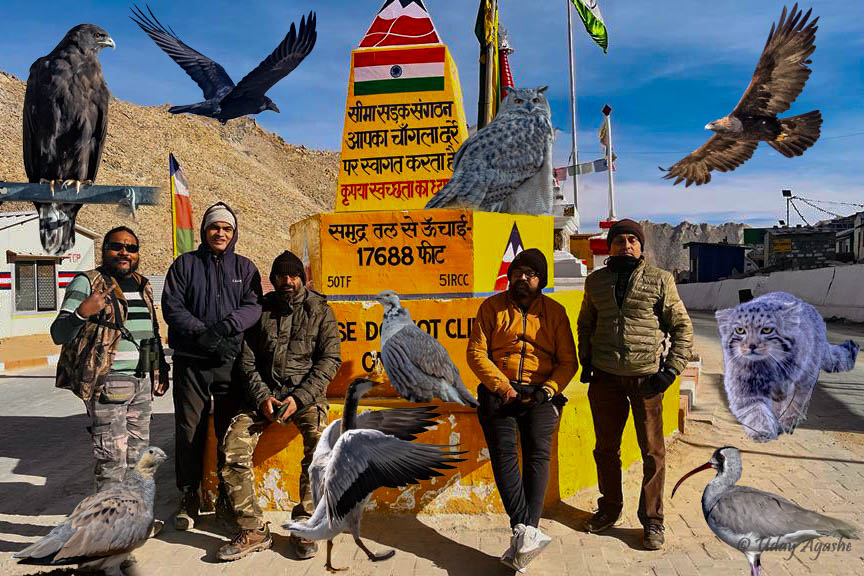
About the Trip ...
Ladakh has been on my mind for a long time. Based on what I could get from birding friends, it is an entirely different habitat. High altitude and cold desert. At that height, you would expect snow too. The bird species you get there are also entirely different (that was the main attraction).
That was the birding part, but I had also heard stories about altitude sickness or Acute Mountain Sickness (AMS).
So when Abhay announced the plans for Ladakh this year (he asked us to choose between July and September… and we chose the latter), I had both things in mind. But the urge for lifers was very strong and I decided to join. We were a group of 6 including Abhay by then, and we quickly booked our air tickets for Leh (the capital of Ladakh).
Preparations Before the Journey
Once we finalized the travel dates, I started looking for more information (about possible bird species as well as altitude issues). The eBird website is the best place to know what you can find in a particular region (you can get the list month-wise), so that was the obvious first choice besides talking to those who have already been there.
Next on the list was to understand altitude issues from people who have visited earliest. Here, the experiences were varied. Lots of them said they did not find any issue but everyone talked about the need for acclimatization, especially since we will be reaching Leh directly by flight. Let me get into a little more detail to put things in perspective.
At sea level, the oxygen percentage in the air is about 21% and it drops to about 14% at the altitude of Leh City (which is at 11,000) feet. And we had plans of going to places as high as 15000 feet where the oxygen would drop to less than 12%. Technically, the percentage of Oxygen remains the same in air, but since the overall air itself gets thin, the effective oxygen drops.
These reduced Oxygen levels can have a lot of impact on the body's functioning. With the smallest of activities, you could get breathless. Not just that, sometimes you may have headaches, nausea, loss of appetite, general feeling of being not well, etc. Most of the time, these symptoms are seen initially but as the body adjusts, they will gradually reduce (only in a few cases, it can degrade further and in rare cases could be fatal).
Whoever I talked to (people having been to Ladakh earlier) insisted that acclimatization in Leh for 2-3 days is a must before progressing any higher. Some of the other instructions were:
- Although cold, the air is so dry that you need to drink water at regular intervals (dehydration can accentuate the mountain sickness and because of the same reason people are advised not to drink or smoke).
- The evenings/ nights are cold, but the Sun is extremely harsh during the day-time, so it is better to wear sunglasses throughout the day
- Some also suggested taking Diamox tablets that help reduce the symptoms (but our doctor suggested avoiding it altogether). There were mixed reactions from people who have gone there (some said, it’s a must.. some others said “don’t even think of it”)
- Some suggested carrying Camphor (भीमसेनी कापूर) as that helps the breathing process.
- Our Pre-paid SIM cards do not work in J&K and Ladakh. And if you are converting your SIMs to post-paid for this purpose (like I did), do it by going to the Gallery/showroom (it won’t work if done online, through mobile app)
- Don’t think too much about it. If you are mentally strong, you will have less of issues
With all these suggestions we set ourselves for the trip. Then came the first jolt, we had booked a direct flight from Mumbai to Leh with GoFirst but the company suddenly stopped functioning. So all our early booking advantage was gone and we had to book a new ticket (this time we got it via Delhi and the time was odd).
Day 1: In Leh, the Capital City
Our flight from Mumbai was at 5 am, so we decided to start before midnight from Thane (a couple of us were coming from Pune too) and take a nap at the airport itself if possible. One of our members had to cancel last minute, so there were now 5 of us.
Both flights (Mumbai to Delhi and Delhi to Leh) were on time but we could not get any sleep at the airport. As scheduled we got out in Leh by noon. The air outside was cold and we did not find any breathing issues there but walking towards the car park (with our bags) turned out to be a little difficult task.
Our homestay was in Choglamsar (about 7-8 km from the Airport) and we reached there by 12:30. Got the rooms, kept our bags there, and came straight to the dining area for lunch. The idea was we could catch up on some sleep as there were no activities planned for the day anyway.
After lunch, all of us took some rest. We were feeling comfortable by then with normal breathing. At around 3:30 I got up to go to the bathroom and once inside I felt dizzy, it was like a shock and happened suddenly. Didn’t realize it but probably I got up from bed a little quicker (just the same agility with which we move around back home) and that made me a little breathless and dizzy. Now I slowly walked back to the bed and relaxed. I could sense the increased heartbeat too. Within a minute or so, things were back to normal but that was a lesson learned. While in Ladakh, move around cautiously, with no abrupt action or excitement!!
After that things were smooth. In the evening we even ventured to the local street (a slow walk of just 10-15 minutes)
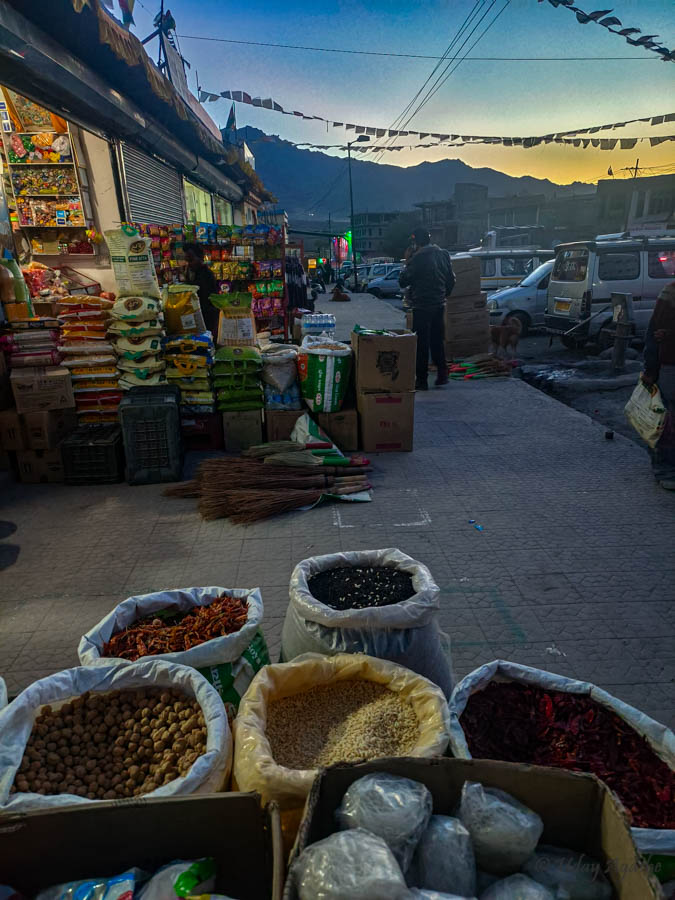

Dinner was at 7:30 and before 9 we were back to bed. We had planned for a local birding trail in the morning (around 6 a.m.) so before going to bed, we kept our cameras/tripod ready.
Day 2: Local Birding in Leh
As planned we were ready by 6 and although for the farther destination, we planned to travel in a Tempo Traveler, for this city birding we used 2 small cars instead. For this outing, our host Mr. Phunchok Tsering (referred to as PT) joined as the guide.
Since it was still an acclimatization period for us, we did not venture very far (plus we remained at the same altitude). We went to a nearby grassland area. Ladakh in general is a desert and most of the mountains are barren, but there are some green patches. Leh City has a few of those, today we went to the Shey marshes. Our first target was the beautiful Ibisbill. It is generally seen in a shallow flowing stream but being shy, they are away from common human areas. On the way 2-3 times, our guide PT stopped to check the nearby habitats but there were no signs of those birds today.
Little later, we all got down and walked to a grassland as there was a lot of bird activity seen. Mostly the small birds but there could be lifers for us too. So we slowly started scanning the idea. The first visible bird was the Chiffchaff. Abhay asked us to take photos, as it was the Mountain Chiffchaff (lifer). Soon we realized there were 2-3 more chiffchaffs seen. As we kept moving around, we could see the Bluethroat as well as a few other common birds in the bushes. There I also saw, a swift-like bird flying low. I quickly took a few shots (who knows what could be lifer here) and it turned out to be the Common Swift.
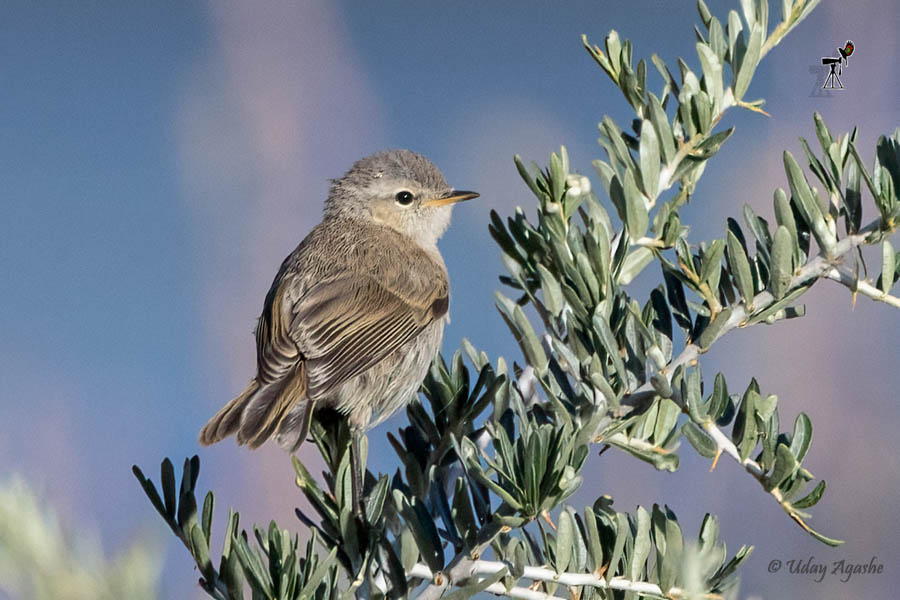
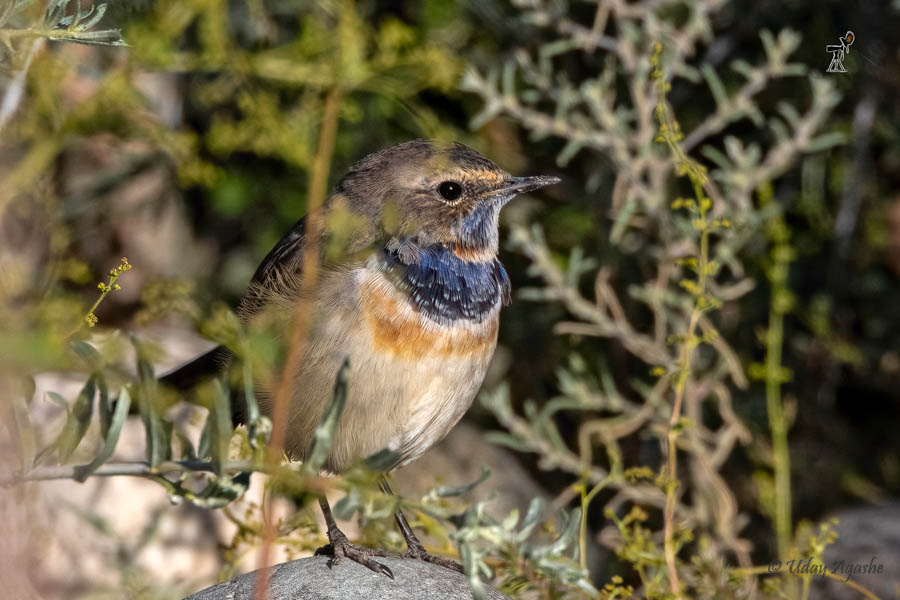
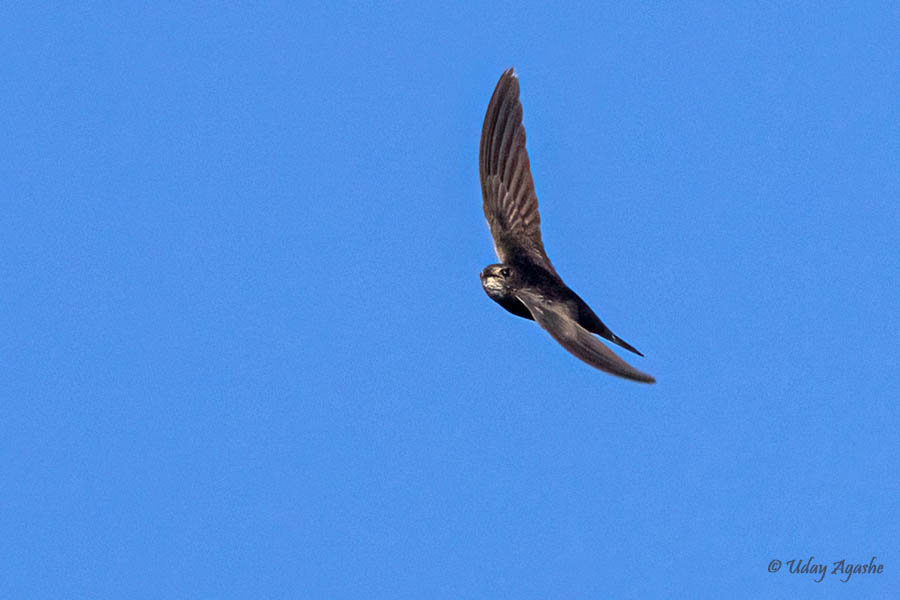
Just then our guide got the news that 4 Ibisbills were seen in another area near the Sindhu Ghat. So we all walked back to the road and drove straight for the spot. But by the time we reached there, the birds had flown further. We waited there for some time and then decided to explore in the direction where they were seen flying. Our guide was well versed with the geography so he went off-road and drove into a patch of sand, keeping the stream in sight all the while.
Our guide had a hunch about their possible location but just there we saw a group of laborers working close to the steam. This was a bad sign as they might have disturbed the birds in the process. But we went a little ahead anyway and all 4 birds were seen. We quickly took a few photos from far away and decided to slowly approach them on foot. We were cautious all the while (moving under the guidance of Abhay) and every few steps, took a few photos. The presence of laborers was probably a blessing in disguise as the birds were used to seeing humans around, so we could reach about 50-60 feet from the birds. Got a few decent photos from there. Going any further was risky, so we decided to stop and as we turned back somehow the birds got alert and they flew away.
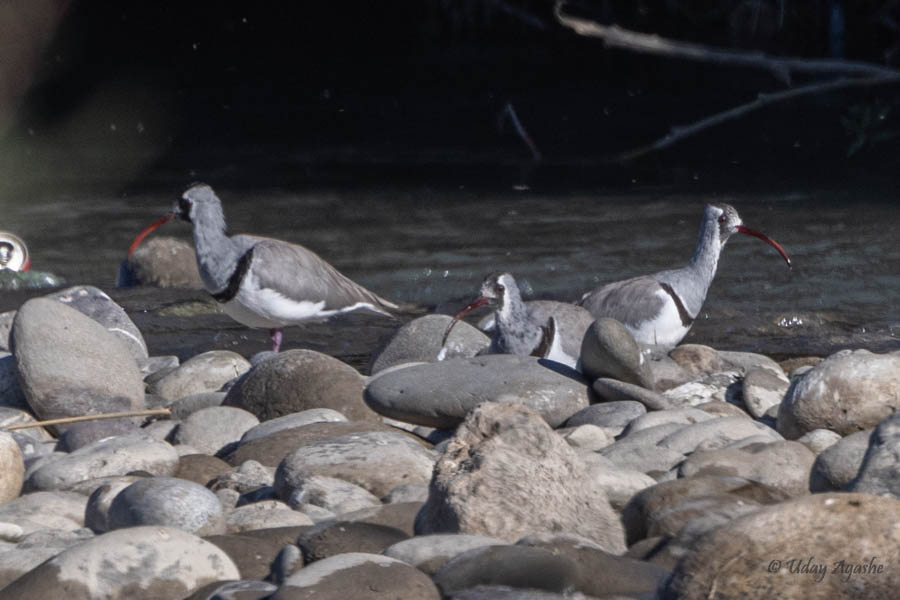
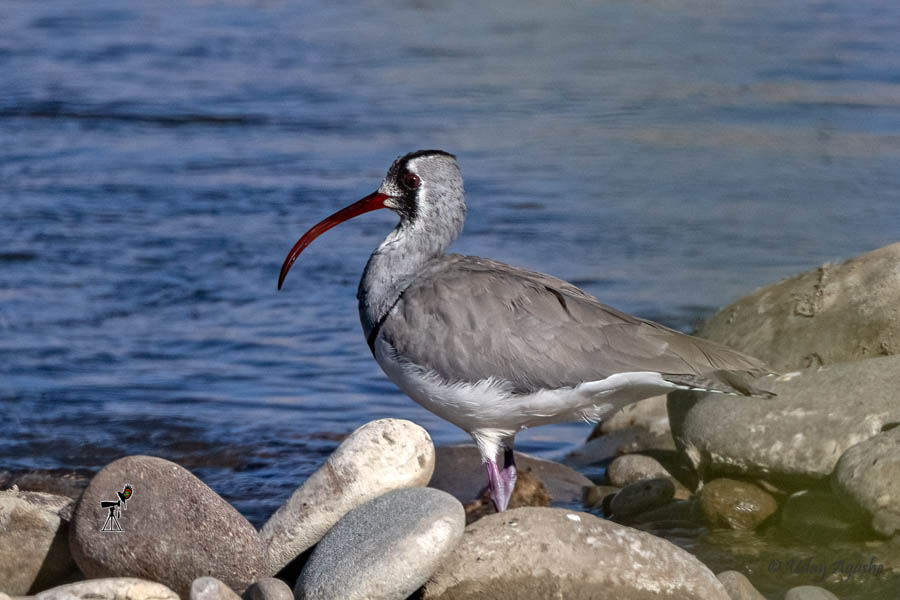
As we were coming out on the main road, we saw a nicely plumaged Common Rosefinch on a barbed compound wall. Close to that, we even saw a Black Redstart (there was some confusion about its identity, but in the end, we concluded that it was a juvenile bird).

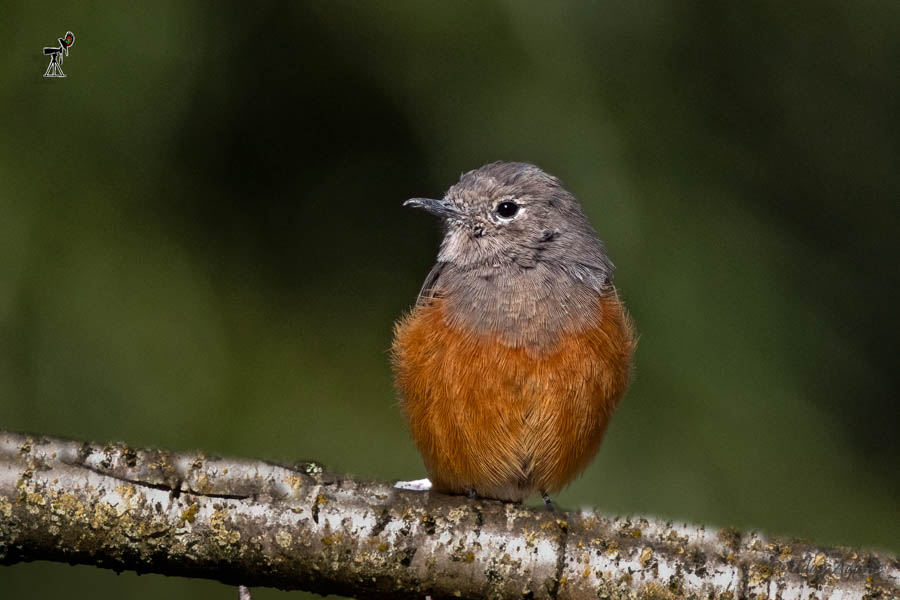
By then it was 9 am and now we had 2 choices. Either head back to Homestay for breakfast or continue for some more time and have a delayed breakfast. By continuing we could have got a couple of more lifers in better light, had we come back after breakfast, the light would have got that much harsher. So we all unanimously opted for delayed breakfast.
Our target now was the Carrion crow (a bird from the crow family that can feed on carrion, hence the name). Oh, there was another crow family member that was our Lifer. It was the Eurasian Magpie, a very common bird in that region and we had seen many of them during those couple of hours but we did not get any good photos.
We searched for these species for the next hour or so. Luckily we got all of them and managed to reach for breakfast before 10:30.
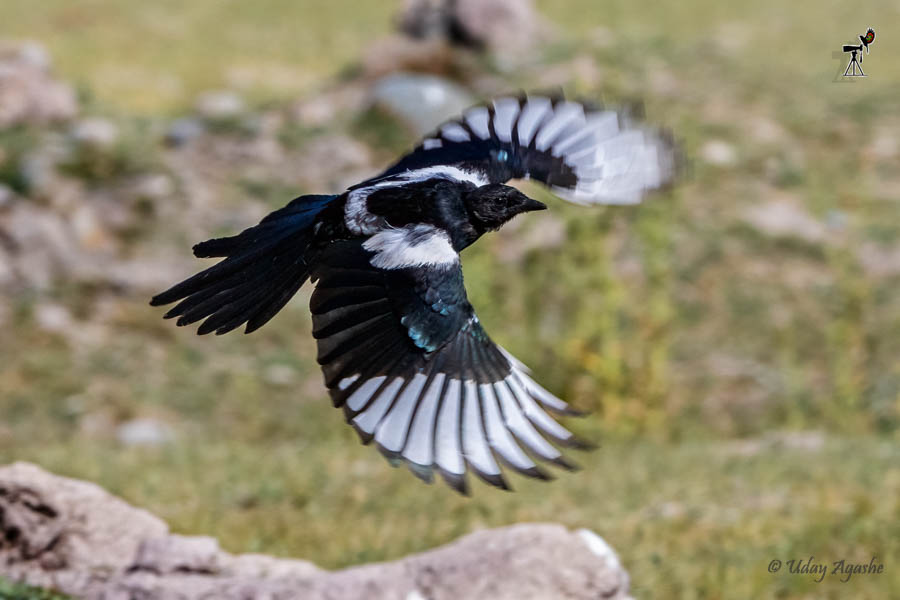
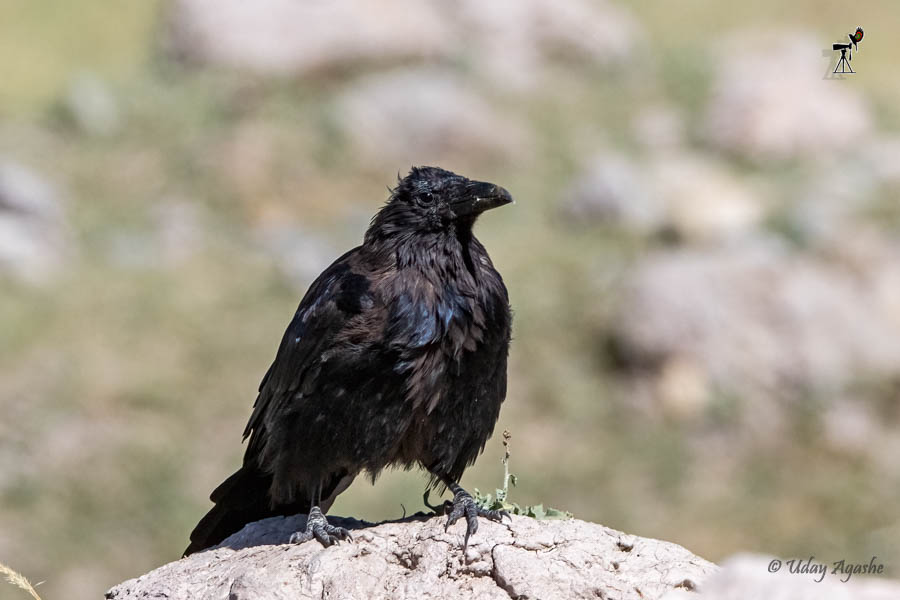

After breakfast, we planned to take some rest. Our next outing was planned for 3:30/4 so we had time till then. In the compound of our homestay, there were a few flowering plants and we could see some bees & butterfly activity. Although it was hot outside, we all rushed with our cameras to capture those insects feeding on the nectar of the colorful flowers.

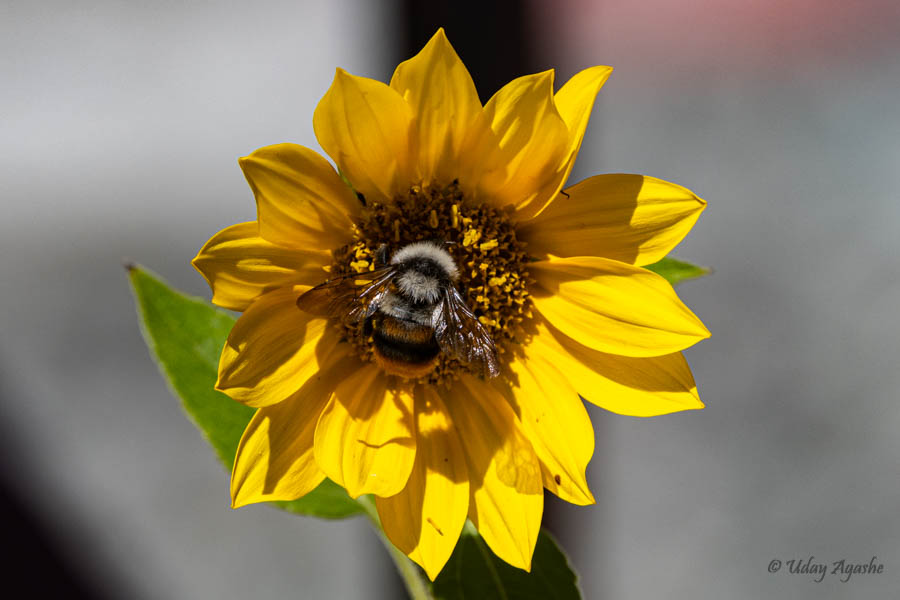
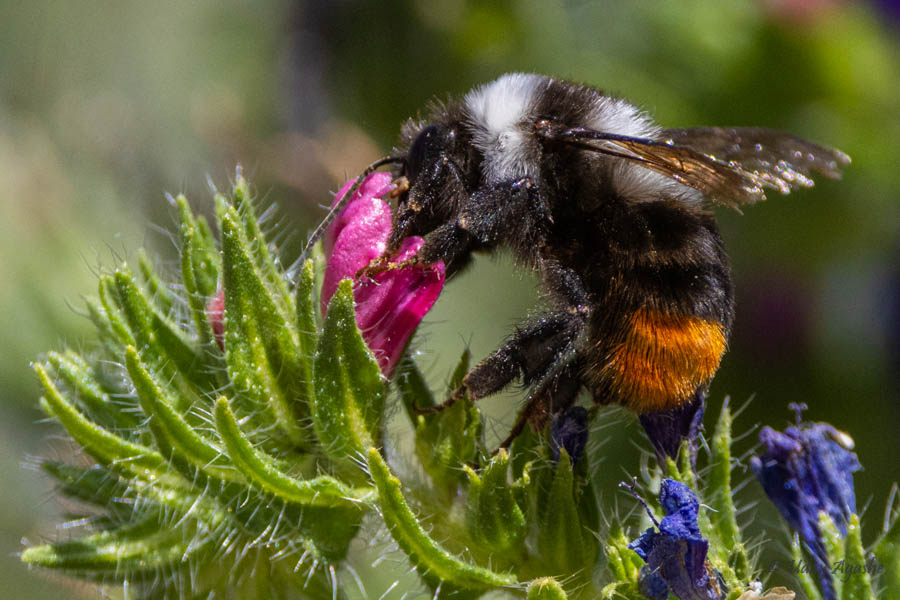
PT, our host was very cautious about our over-activity and suggested we take some rest before the evening outing.
We had a nice tea at 3:30 and then moved out again. Now our target was the Eurasian Hobby. Little away from the Choglamsar town (where we were staying), there was a wooded area where a few of the Hobbys were recently seen. As we were nearing that area, we saw a Golden Oriole flying across the road. There was the possibility of seeing the Eurasian Golden Oriole in this region, so we all quickly got down from our vehicles and waited patiently for the oriole to show up again.
While we were waiting for the Orioles, we saw a cuckoo-like bird on a transmission wire. It was far-off but we managed to get some photos (of the Common Cuckoo). The usual Magpies were also seen nearby. Little later, 3 orioles were seen, we followed their movement and managed to get a few record shots, but it turned out to be the Indian Golden Orioles.
While we were waiting for the orioles, our guides drove ahead in search of the Eurasian Hobby. Before they came back, we even managed to capture the beautiful landscapes around us.

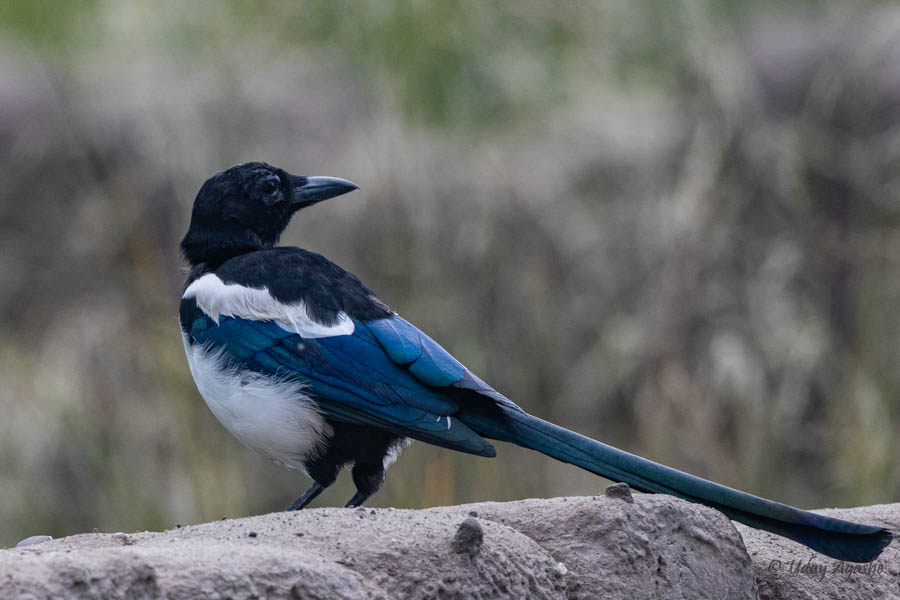
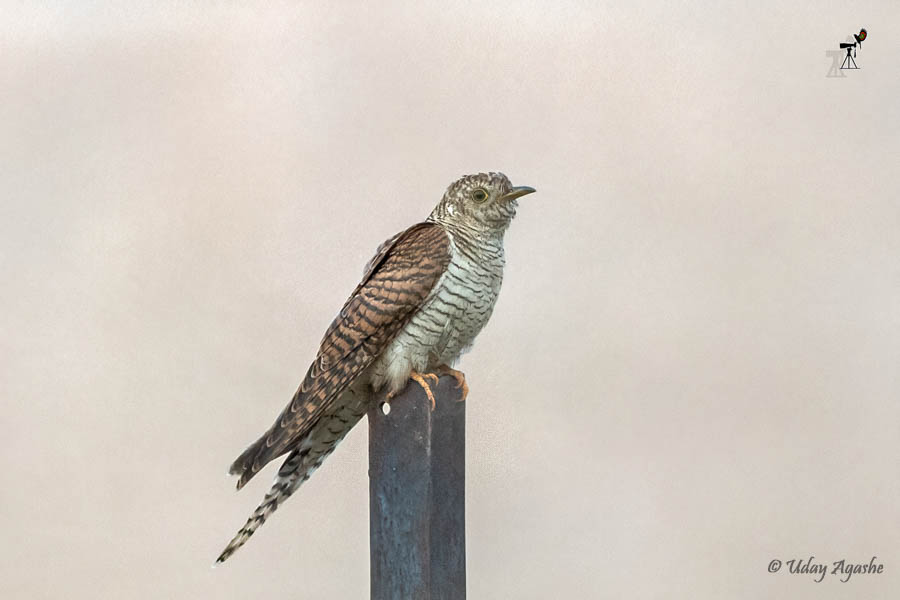
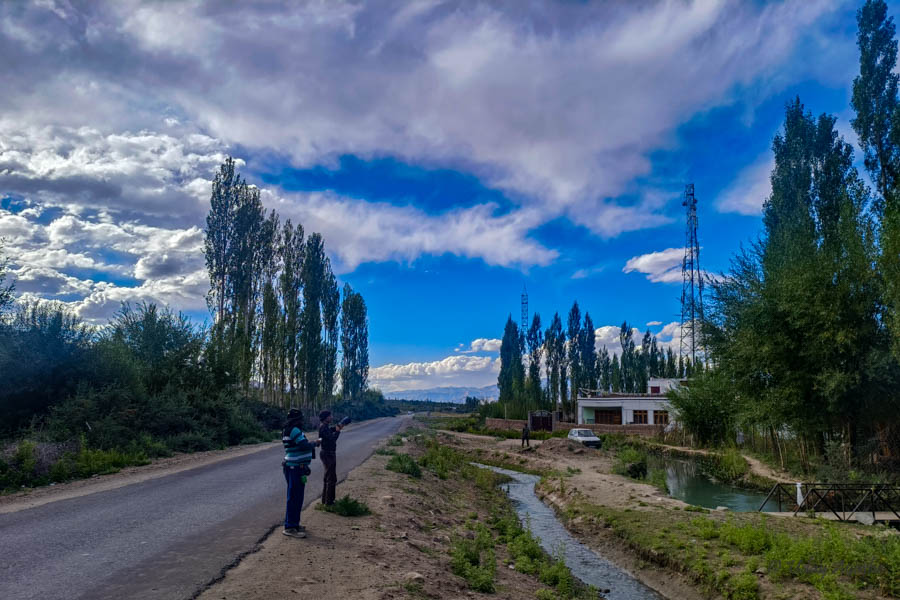
Little later our guides were back but they had not seen any Hobby. We still had some time till daybreak so we all decided to check the area (more eyes might help us see them better).
And soon we were able to see one Hobby perched on a tall tree close to the road. As we were taking photos, we saw one more falcon up in the sky and that was being chased by a smaller-looking falcon. Our guides quickly pointed the binoculars in the direction to identify the first as Peregrine falcon and the chaser was another Hobby. Little later we saw another Hobby perched against the light on another tall tree.

After the target species for the day was done, our guide instructed us to get back to our Homestay (he did not want us to do too much activity as tomorrow morning, we planned to start the day at 4 am, and considering that, he wanted to take us maximum rest). On the way, we stopped a couple of times for the landscapes where we sighted a monastery located on a small hillock.
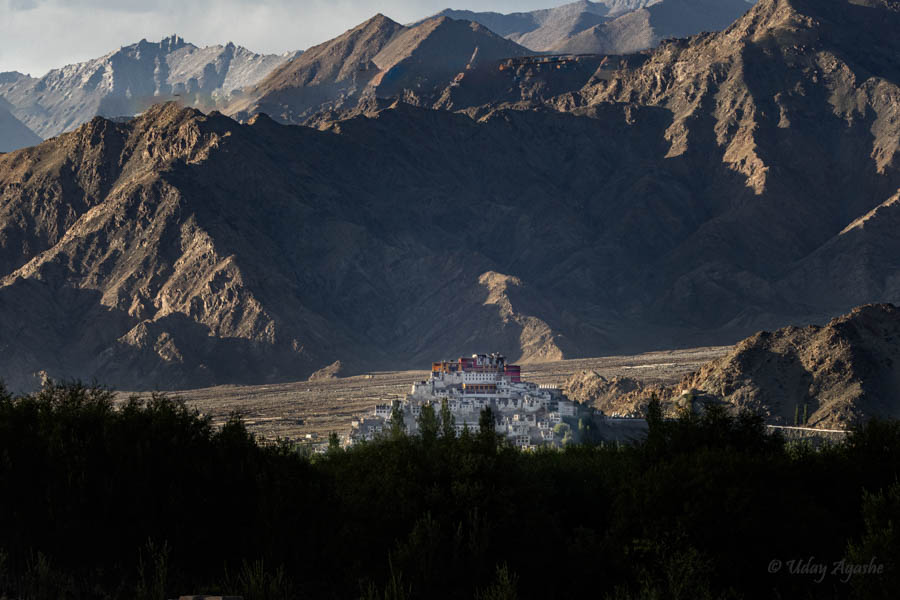
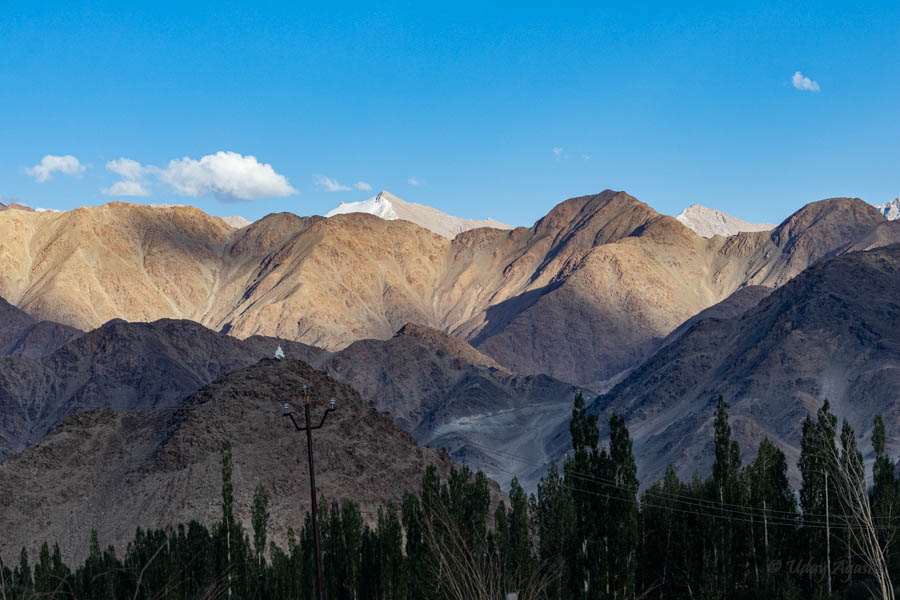
We were back home as the light was fading. Here our regular dinner time was 7:30/8 and we were well before that. Tomorrow morning we were traveling to Merak via the famous Pangong Tso (Tso means lake in the local language). The altitude there was going to 14500 feet. About 4000 feet above our current place.
The route to Pangong was through the Changla Pass which was a possible habitat for the Snowcocks. These birds from the Chicken family, survive at the high altitude (17000+ feet) by feeding on small grasses and shrubs that grow in that otherwise barren landscape. The mountains in general look devoid of any plants or trees but if one looks minutely, these tiny shrubs and grasses do grow there once the snow cover is reduced (September being the peak summer, most of the snow is melted by then). These snowcocks can be seen feeding during the early morning hours only. As the sun rises, they take shelter under the boulders to stay away from the prying eyes of the birds of prey.
So we had to necessarily reach that habitat at daybreak (our possible window was between 6:30 to 8:30) and that meant we had to start from our homestay by 4 am (that is wake up a little before that and get ready). With that in mind, we quickly packed all our bags and went to bed before 9 p.m.
Day 3: Starting Trouble
We hoped to have a good sleep and be fresh by 3 am but the Altitude had different plans for us. I generally have a very sound sleep and hardly get up at night but here it was not so. Got up 2-3 times till midnight but by around 1 am, I was stark awake. At night, I had a cold and my nose was blocked. At home, even in this scenario, I can generally sleep well by lying down on one side, but here nothing was working. By the way, in that thin area, even changing sides in bed would make us breathless (maybe because of the load of the heavy blanket).
I decided to walk a few paces within the room for some time and tried some deep breathing but there were no signs of sleep. Soon I realized Guru (my roommate) was also awake (or maybe his sleep was disturbed because of my movements). Then for the next couple of hours, we put the lights on, started chatting, looking through photos, basically anything to kill the time. The previous evening, we had our tea delivered to the room, the thermos was still lying there and the tea was not completely cold yet. So we even had a cup of tea.
While sleeping we had thought getting up at 3 was too much but now suddenly it was like a blessing in disguise (just imagine remaining awake from 1 am to normal morning). We were all set by 3:30 (bags packed, we had our full winter clothing, and ready to start the journey).
For the next 3 days, Nurboo was going to be our guide but the owner PT was also awake by 4 when we started. The cook (Anwar) was up much earlier and he had made our packed breakfast ready by that time.
While leaving PT enquired about our well-being and that’s when we realized it was not just me and Guru but everyone had trouble sleeping. Listening to this he was a little concerned because, for the next 3 days, we were going to stay at a higher altitude. He gave us a few further Dos & Don’t instructions. We were also carrying an Oxygen cylinder with us for an emergency.
In hindsight, it was a mistake on our part as our bodies were not fully acclimatized to the Leh altitude and we were going to an even higher altitude. We should have stayed at least for 1 more day in Leh before going ahead.
Day 3: To Merak via Pangong
As planned we started by 4:15. It was dark outside and it would have taken at least a couple of hours before we could reach Changla Pass. I had already taken my motion sickness medicine (which makes you sleepy), so could catch up on some sleep during that time.
I got jolted when there were shouts of Chukar (for Chukar Partridge). Right outside on the side of the road, there was the Partridge. It looked at us and quickly moved down in the valley below. The light was so low that we did not even attempt to take out our cameras (should have tried with mobile but missed it). Now we were all awake, and again after some 200 meters, we saw the Chukar family crossing the road (going from the hillside into the valley). Parent plus 7 fledglings, what a sight it was! But again, no pictures because of low light, plus the guide (and Abhay) said we would get umpteen Chukars in good light later (which never happened).
As the light got a little better, we started seeing the bird activity. First came the Robin Accentors. These high-altitude birds were perching on the rocks and having their morning meals (small insects/seeds). Then our guide sighted the Himalayan Snowcock on the hill above. We wanted to take photos from there but our guide suggested we take the curving road ahead that will get us eye-level images. We went up as planned but could not locate the snowcocks anywhere (either we missed the exact point or the birds would have moved away by then). After 10 minutes, we thought of going down again but there were no signs of it. Luckily, I had got a record shot on the hill the first time.

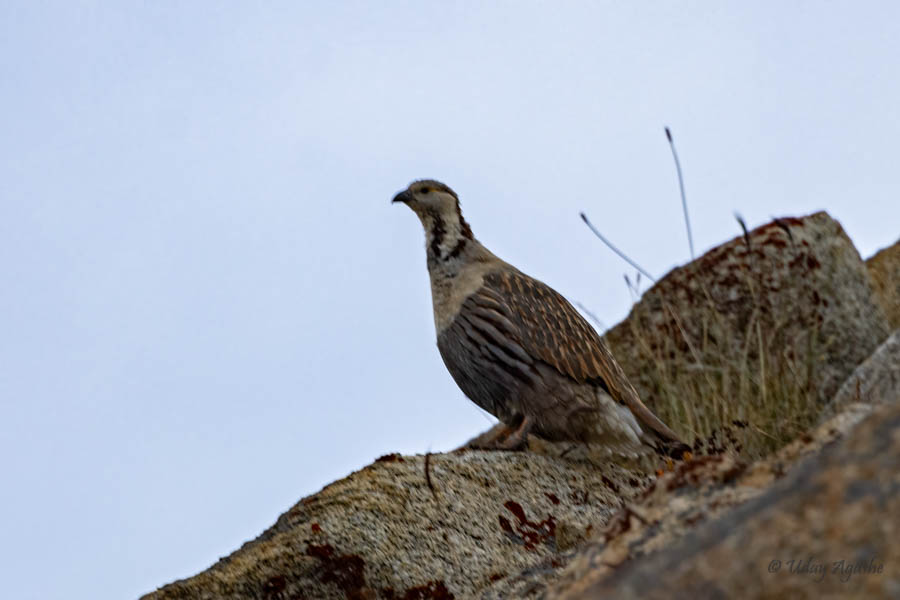
All the while we did this photography from the vehicles only as the hilly road was narrow and we could not park the vehicle there. We even photographed some landscapes from the moving vehicle. Little ahead, we noticed some movement near the ground. On close look, it was the Woolly Hare (woolly probably to survive in the harsh cold). It was moving swiftly but stopped once to look at us giving nice eye contact.

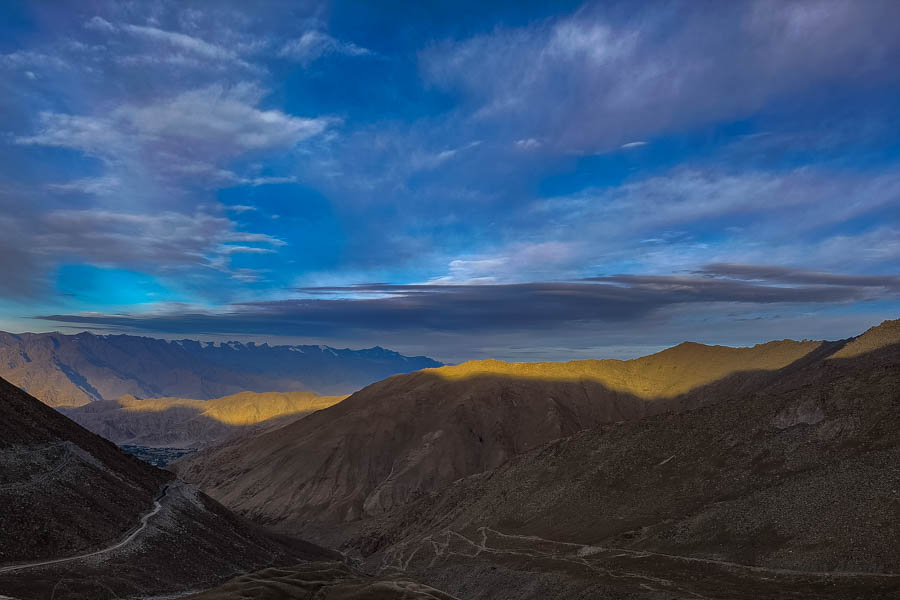
We continued our search till about 8 am but there were no snowcocks seen (they camouflage so well, we may likely have missed them in the stony mountains). By now, we had reached the high point of the Changla Pass. It is at 17688 feet from ground level and we all got down for our group photo. As I got down, I realized the temperature difference, it was like a bone-chilling cold, fortunately, I was carrying my hand gloves.
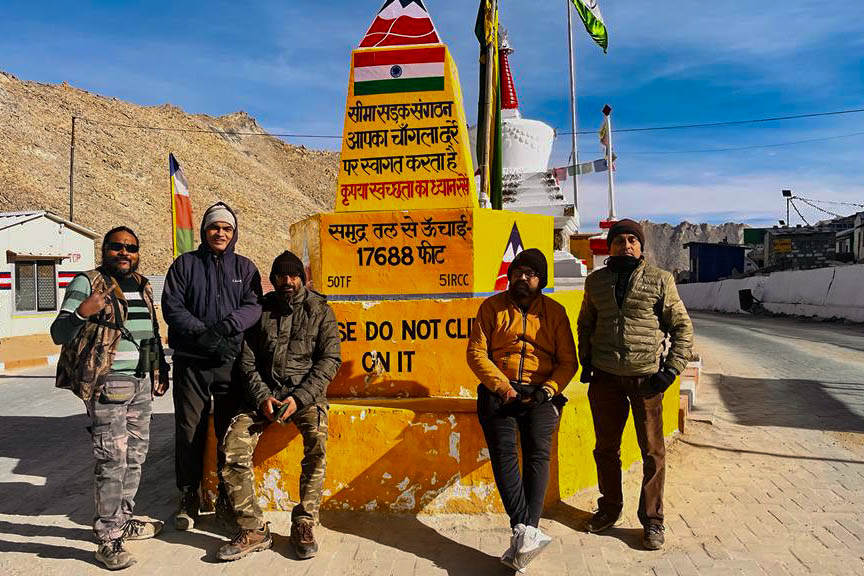
We stopped there for a few minutes to experience the extreme height (this was the highest point I have ever been to). But it was too cold, preferable to stay inside our tempo traveler.
After Changla Pass, we started our descent. Our destination, Merak town was at 14500 feet. Soon we reached a plateau and here we saw a few more birds. The lifer among them was the White-winged Redstart. Looks very much like the White-capped Redstart at first but the white wing patch was the differentiator. These were quite a few redstarts in that region along with the Accentors.

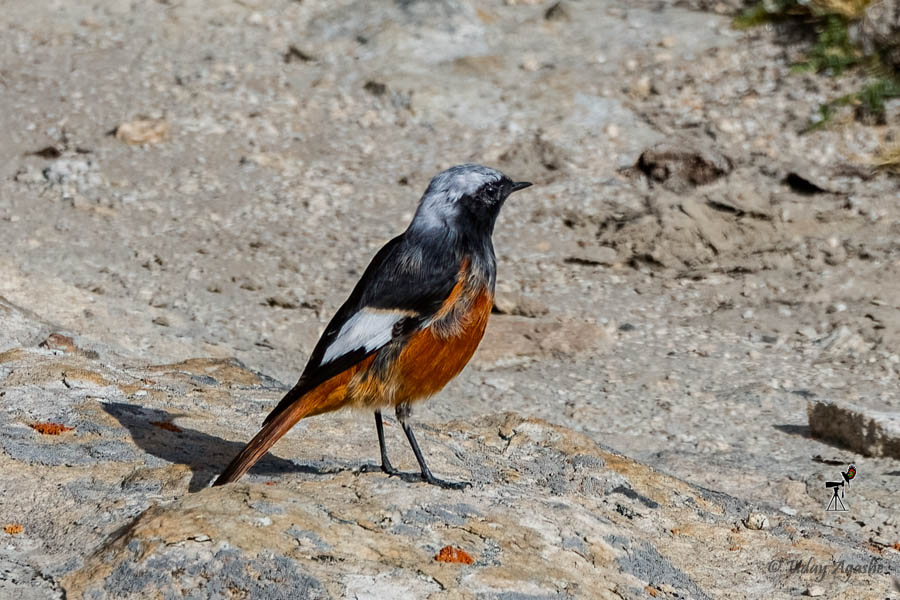
It was 9 a.m. by then, and was time for breakfast. We waited near a small tea stall to have our packed breakfast. It was cold there too but better than Changla Pass. As we were having our tea, our guide noticed a big raptor-like bird flying towards the hills. I quickly got my camera and got a couple of photos before the bird disappeared to the other side of the hill. That was another lifer, the Bearded Vulture or Lammergeier.
Close to the tea stall, there was a temporary wall constructed from stones and dung-pile. Here our guide saw a different bird that he thought to be a Twite (another possible lifer), so we all rushed there and took photos. But after some discussion, the conclusion was juvenile of Robin Accentor. It was confirmed a little later when a parent bird was seen feeding the juvenile.
Just then, the bearded vulture reappeared on the horizon. Once again it was far. We hoped for it to land somewhere (so that we could take a ground photo) but that unfortunately did not happen during this entire trip.


Just as we were looking at the vulture, we could see 2 black-colored birds moving in the backdrop of the mountains, they were so far away that we could not get any meaningful photos. But with binoculars, Abhay confirmed them to be the Red-billed Chough. They were constantly on the move but were really far off.
With these bird sightings, we decided to spend some more time. Soon we were able to see another lark variety, the Horned Lark. Like other lark species, they were foraging on the ground. As we kept looking we could see 2 adults and a juvenile nearby. When seen from a proper angle, the feathers on the head look somewhat like horns, hence the name.

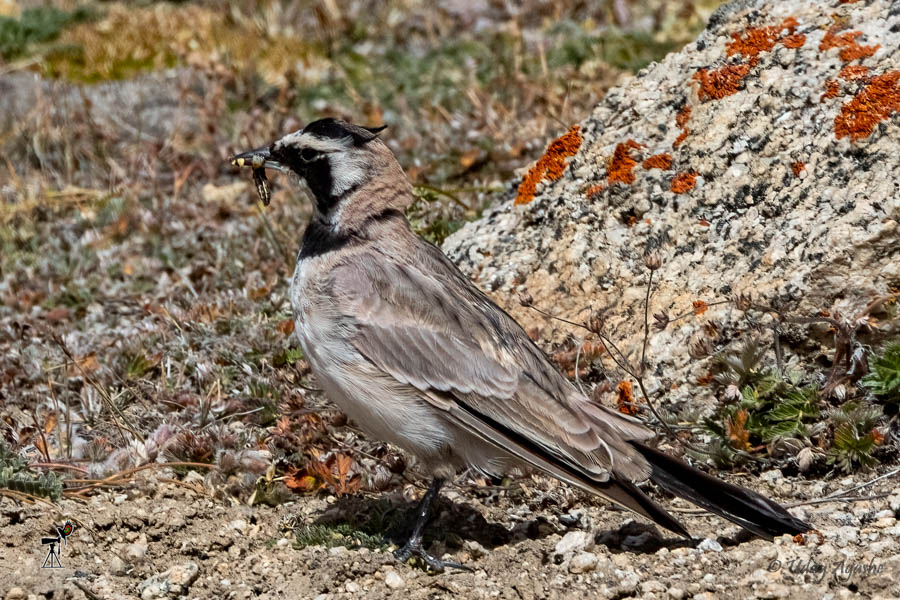
We still had a lot of distance to cover till Merak. The roads so far were decent, although not wide, there was not much traffic either. As we were moving along, we could see one small stream flowing parallel to the road. It was at a little lower level than the road but it appeared to be a perfect habitat for Dippers. Here we wanted to see the White-throated Dipper, our guide was not sure about their presence in this region but Abhay was confident looking at the habitat.
At some distance, we saw some movement that looked like a Dipper. But to reach there, we had to descend around 50 feet (and suddenly the realization came that going down would also mean we would have to climb back the same distance, at that altitude, it would have been a big effort for sure… so naturally, we decided to not go). Our guide and Onkar took that trail. We others found a simpler route to reach there (drove a little further and from there the descent was not much).
Reaching there turned out to be a fruitful exercise, we did see a juvenile White-throated Dipper moving near the stream. Near the water, we could also see some vegetation, and grass; a redstart was seen foraging there.


We moved from there and within 10 minutes, our guide spotted another Dipper in a stream that was closer to the road. Except for me, everyone else got down and walked near the stream (I decided to avoid any additional effort – by now, I had started feeling a bit feverish). Soon we could see a juvenile and adult pair and they even got a nice feeding shot. They got the birds at a very close distance too.
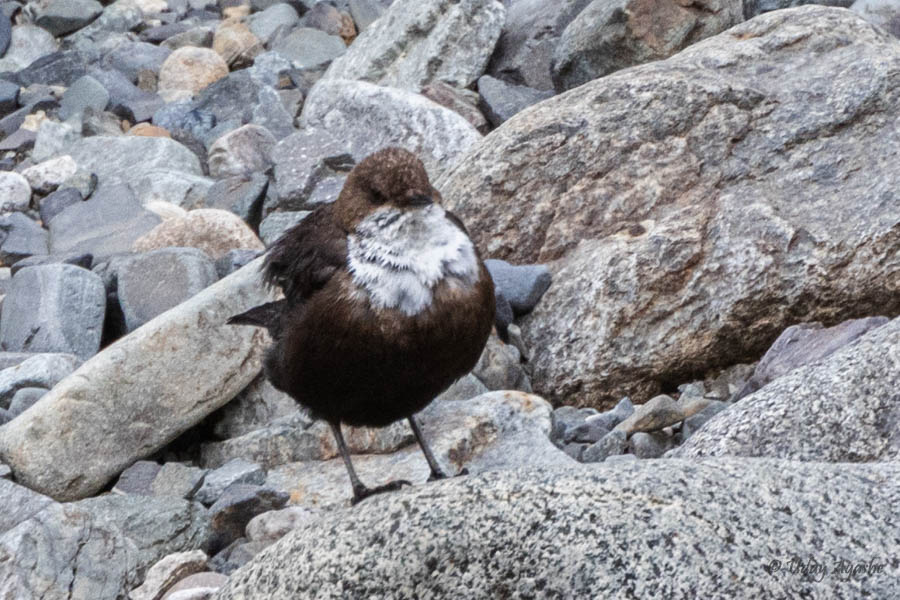

At 1:30, we were driving through a village/town with a few restaurants, so we waited there for lunch. This is where I realized another of the Mountain Sickness symptoms. I was feeling nauseous and had no appetite for any food. Ended up just having 2 glasses of lemon juice.
After lunch, we started our journey in the direction of the Pangong Lake. Although we had no intention of stopping at any of the popular tourist locations, we would be passing through that region. Here part of the road was under construction and that slowed us a bit.
As we neared Pangong Lake, we could see more vehicles (more tourists). At one point, people were happily taking selfies with the Himalayan Marmot (a large mammal from the rodent family). Here the Marmots were very comfortable with humans around.
Our interest was in a wild one and some distance away, we did see another marmot. Once again some of us got down for closer photographs and slowly approached it. But to our surprise, this marmot was also from the same group and he did not budge even when our guys went too close.
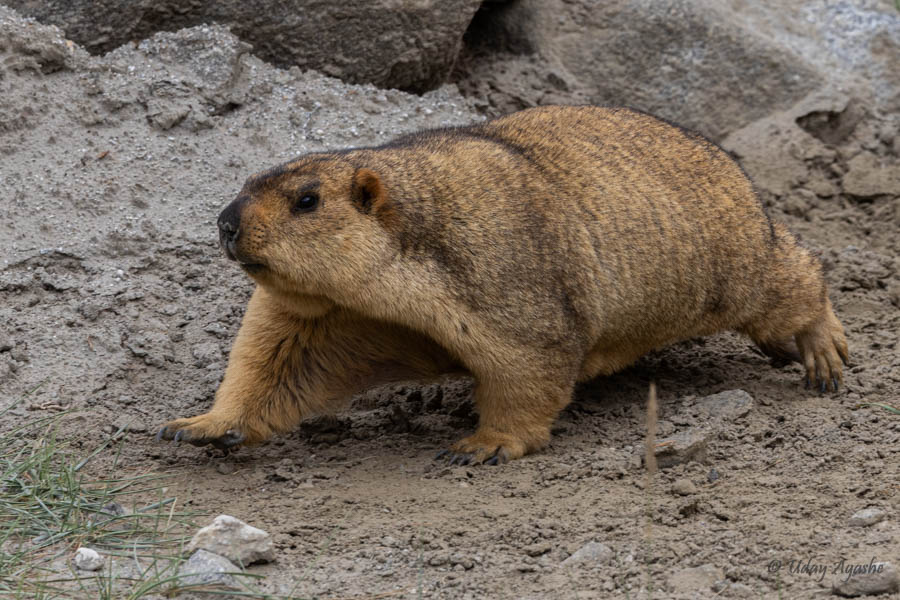

Although we did not wait at Pangong Lake, we were able to take a few photos of the scenic water and the mountains. Dnyaneshwar and Gurunath wanted to take better landscape shots by going close to the water, but we had to reach Merak during the daytime as there were a couple of target species there too. It was therefore decided not to spend time here. Abhay suggested that we can spare some time for landscapes next morning, as Merak town is also on the bank of the lake.
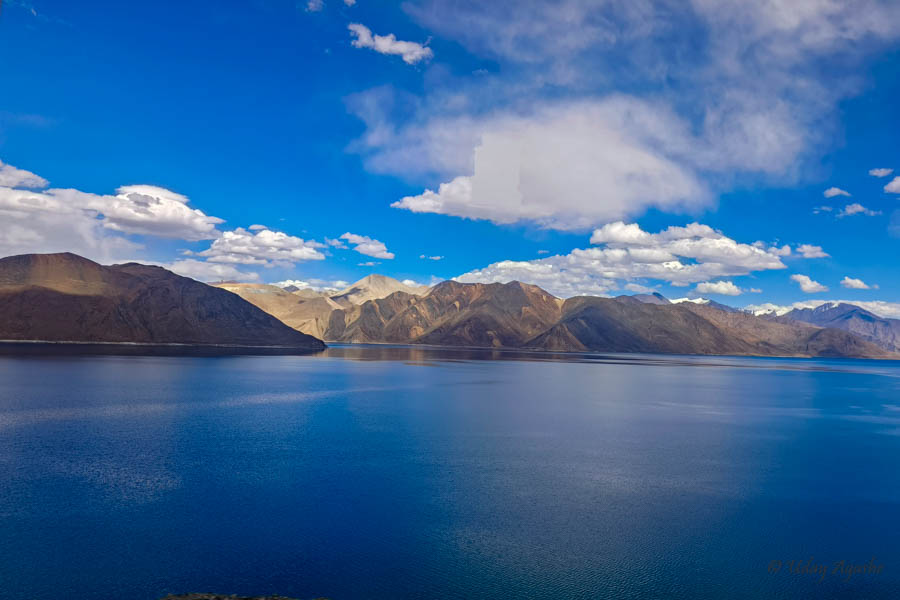
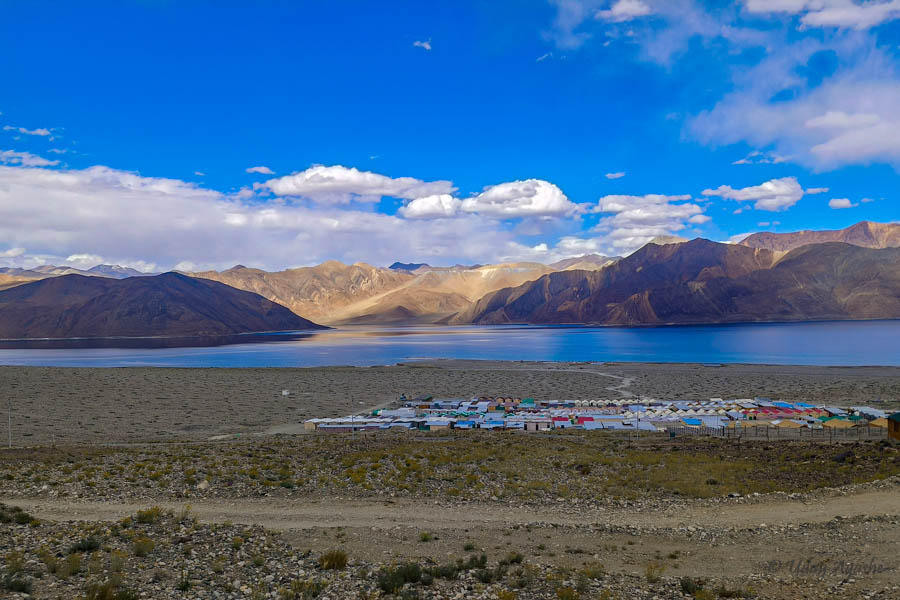
While approaching Merak town, there was some bird activity seen on a small hill. But for Abhay’s attention, we would have ignored them thinking of our common Rock pigeons. But this was a large flock of Hill Pigeons. Abhay thought there was one snow pigeon in the group too (based on his binocular observation), but even after checking all the photos, we could not find any.

We reached Merak town around 4 pm but instead of going to the Homestay there, we went directly to a birding area where we expected to see the Chinese Rubythroat. The area was well inside the fields and our vehicles could not reach till the end. So we decided to park it and walk down about a km for the Rubythroat. Frankly, I was keen on taking some rest by reaching the Homestay so I decided not to take that trail (and I had already seen the Rubythroat in Assam, so it was not a lifer).
But I could not remain inside the vehicle for long, so slowly I started walking toward the group. On the way, I saw a lone Horned Lark foraging on the ground. It was so engrossed in the task, that it did not pay in heed to my presence and went about its task.
There Gurunath and Abhay called me saying there are a few Tibetan Partridges in the distant bushes. This was a lifer for me, so I mustered the courage and walked across. We waited for a few minutes but the partridges had taken shelter well inside the clutter. Our guide by then had walked even further and he called for the Rubythroat. Again, the group went for it and I continued to wait there for the Partridges. It turned out to be a good decision, as slowly the partridges emerged out of the hiding. I could count 4 of them but they were not in clear view. I managed to get a few photos before they went back in the bushes.
That was the only opportunity to see them as they did not come in the open again although we waited for more than half an hour. So we decided to call it a day.
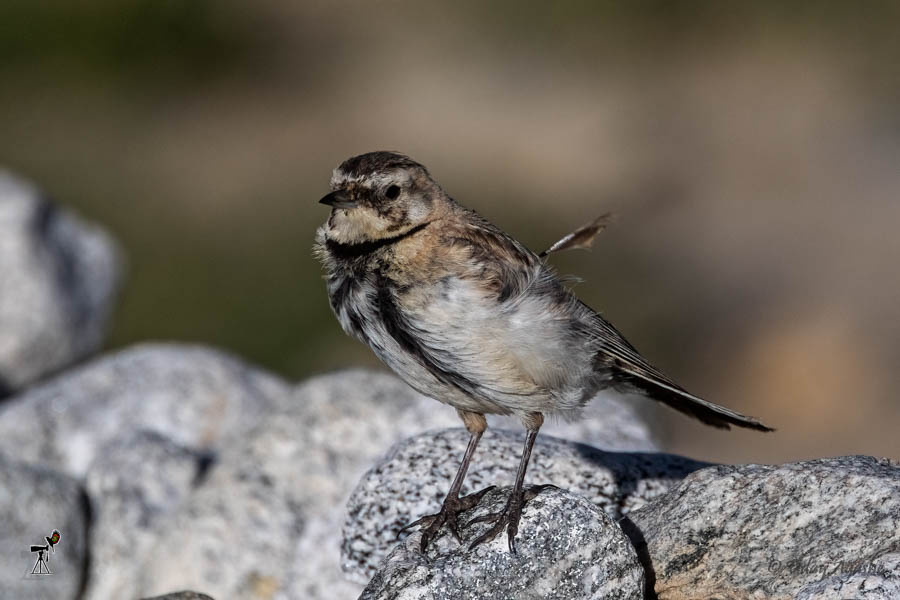
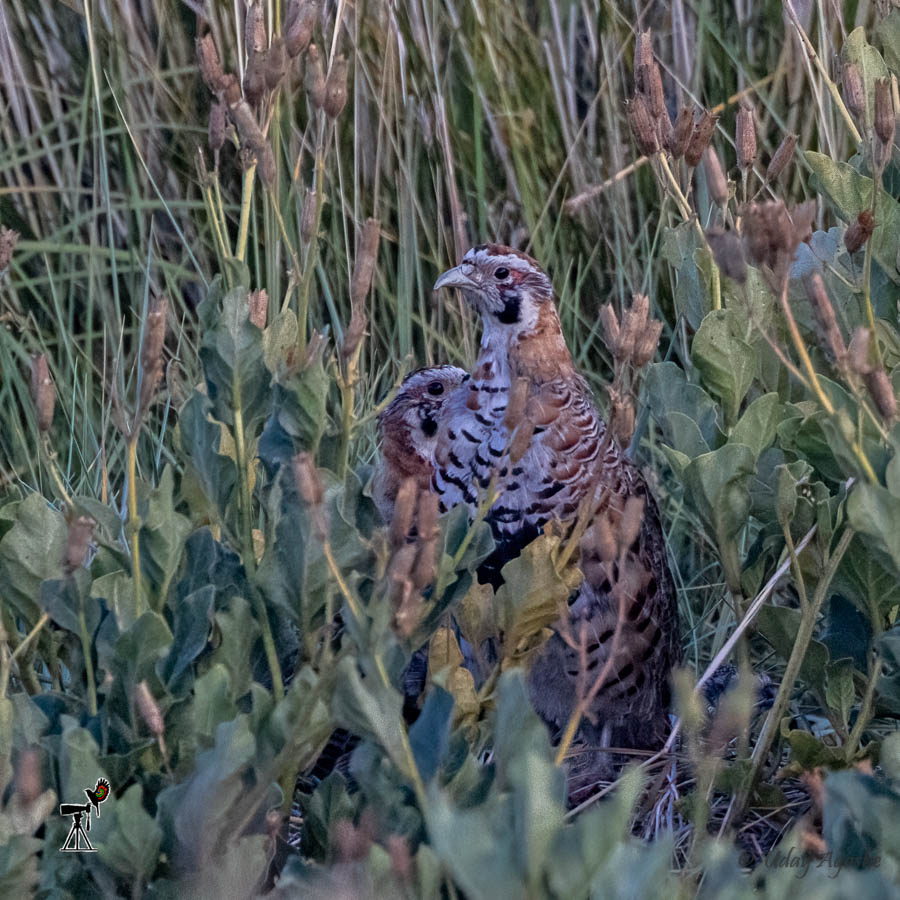
We reached the homestay by about 6 p.m. and took charge of the rooms (it was a little warm inside). There was a common area (like a living room that had a low seating arrangement and all the rooms were accessible from here. Unfortunately, the meals were not served here (like the arrangement in Leh). To reach the dining area, we had to walk some 20-30 meters in the dark (there was hardly any light outside plus there were a couple of small streams we had to cross).
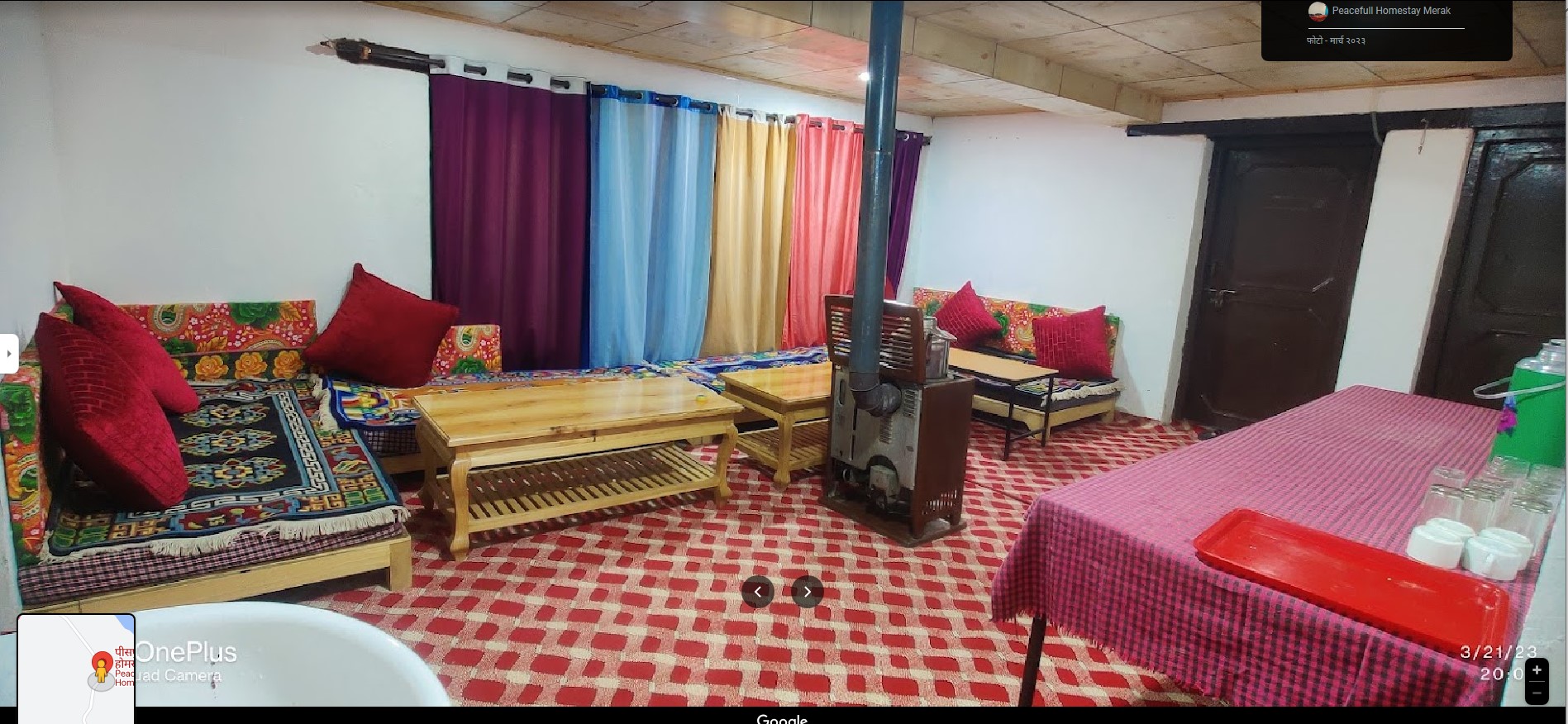
We were tired but decided to rest after dinner. Once again I had no appetite but luckily they had a sweet dish (kheer), so I just had one bowl of that (tried having a chapati/bhaji as well but could not eat it).
There was some discussion about tomorrow’s start and since the Rubythroat was photographed successfully in the evening, there was no need to go to the grassland again. It was therefore decided that we would have breakfast at 9 and then check out from the homestay.
Once again by 9 pm we kept clothes ready for the next day and went to sleep.
Day 4: Merak to Hanle
We slept at 9 but within a couple of hours, I got up. This insomnia was too much, I just couldn’t sleep and soon realized that even Gurunath was in the same boat. All of a sudden we were feeling hot, although the outside temperature must be in single digits. We were also feeling suffocated in the room. We even tried opening the window a bit. It is a little difficult to explain what was happening to us we felt a lot of discomfort (must be due to lack of oxygen I guess).
Now to avoid the discomfort, we decided to sleep in the common area outside (the one shown in the picture above). We came out at around 3 am and were there till 6 am. I probably had some sleep in between but after 6 we realized there was no point lying down.
Today we had planned to start by 9 but more or less everyone was up by that time (sleep was a consistent issue for all). We checked with the homestay guys about breakfast time, and they said it could be ready by 7:30. With that we decided to get ready quickly, have breakfast at 7:30, and then check out immediately.
Merak to Hanle was another 150 km to cover. Normally it would have taken about 4 hours but with our umpteen birding breaks, we hoped to reach there by evening.
Our homestay as well as the overall town was very close to the Pangong Lake. Within 5 minutes we saw a few crows going toward the lake (from the Mountains). So we decided to stop there and check for other bird species around. The crow turned out to be the Raven, we managed to get a few photos but a little later we could photograph two more of them from a relatively close distance.
As we were checking the area near the lake, our guide had heard some different calls, so he went to the bushes on the other side. His hunch was good as we managed to see Tickell’s Leaf Warbler. It was very skittish but we got a few photos anyway. Just there we also saw the Red-billed Chough.
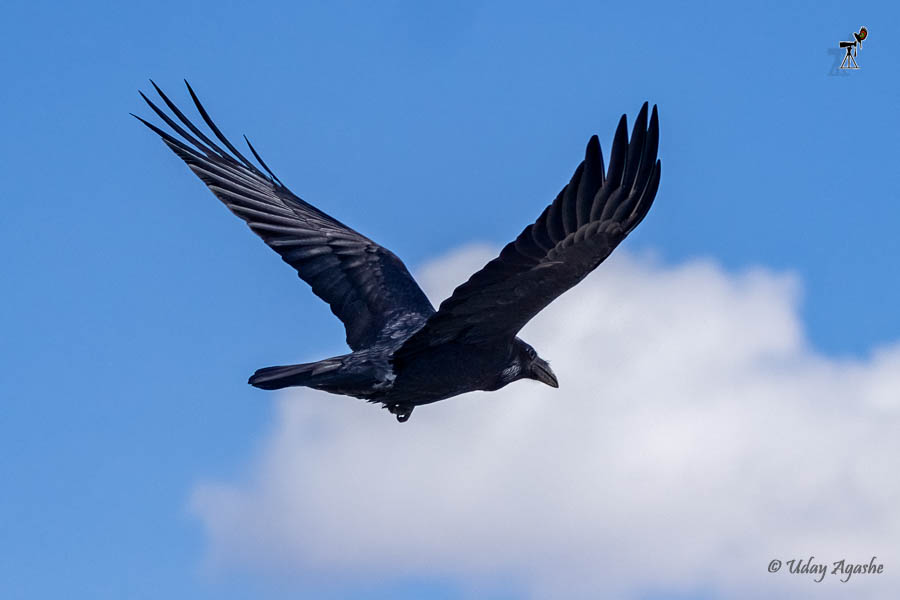
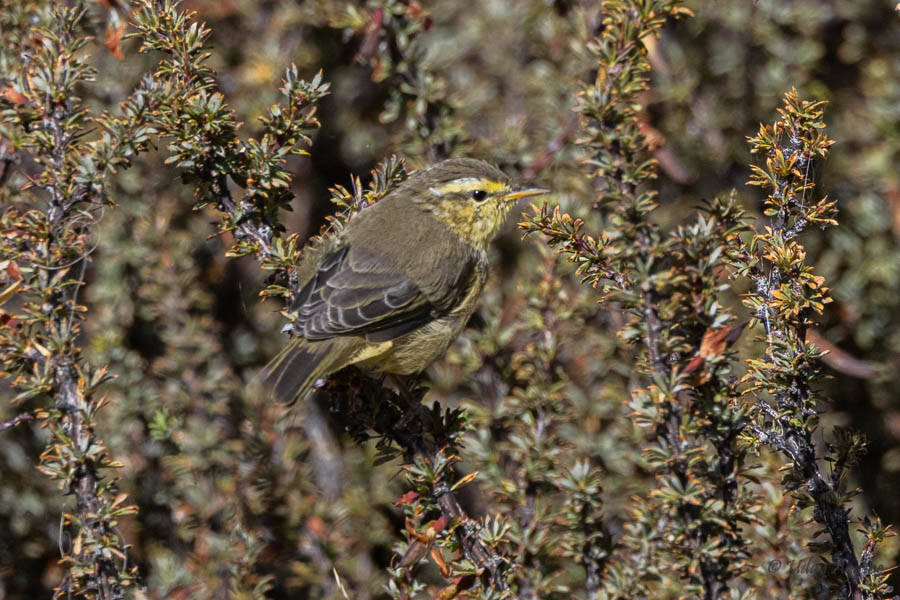

By that time, Abhay had gone close to the waters and he suggested we all be there too, but it was too much of a walk through the undergrowth. We then convinced our driver to take the traveler over a bit of sand (he was reluctant as the sand could have been soft and we might have gotten stuck there).
On reaching there, we could see the beautiful looking Great-crested Grebe. A lone grebe was nicely moving close to the edge making the turquoise waters even more beautiful. Soon we could see a group of 7 large birds flying over the lake, they landed about a kilometer away from us. Some of us went in that direction and managed to get a few close shots of the breeding population of Bar-Headed Geese.
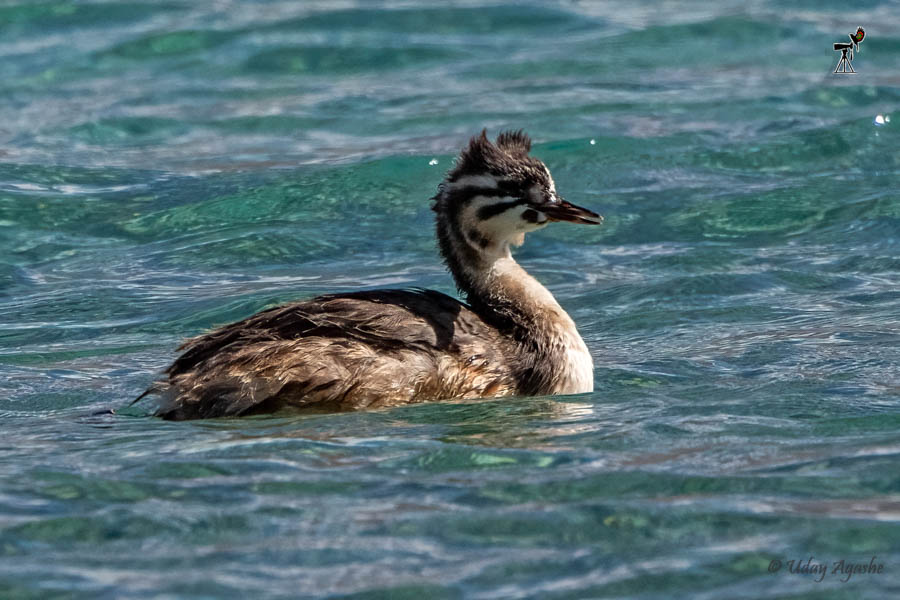
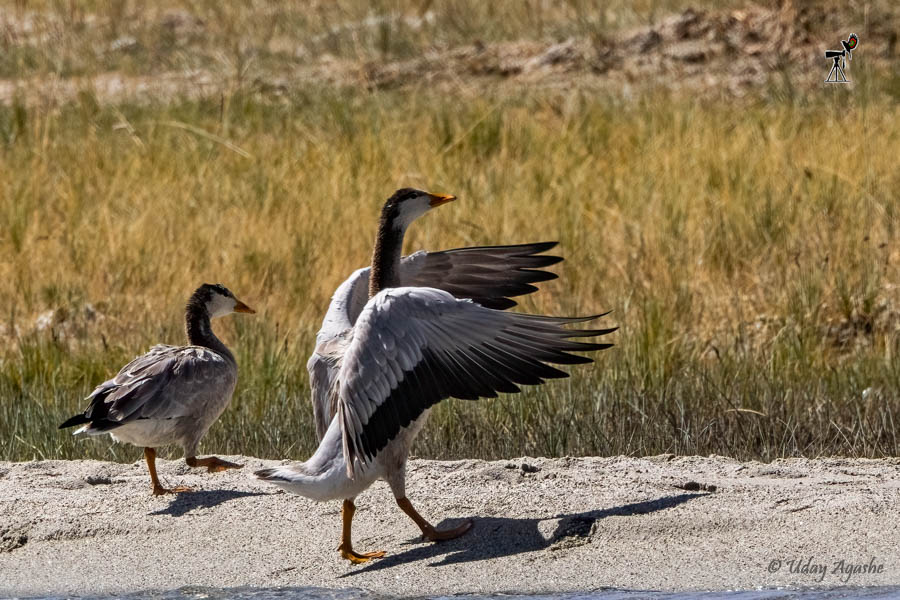
From yesterday afternoon, till about an hour this morning, we were traveling close to the Pangong waters. But soon we took a diversion and went towards the Chushul town. And from that town onwards, suddenly the road disappeared. I mean, for the next 50+ km there was just no road, we were moving on the desert region with just some tracks (of vehicular movement) to guide us. All along, we could see some biker groups too, they must have enjoyed this off-roading experience.
Now we were seeing vast plains of grasslands or sands (a mix of the two). This was also the habitat for the Kiang (the Wild Ass). These are similar to the wild ass of Rann of Kutch but are slightly bigger and are more shinier.
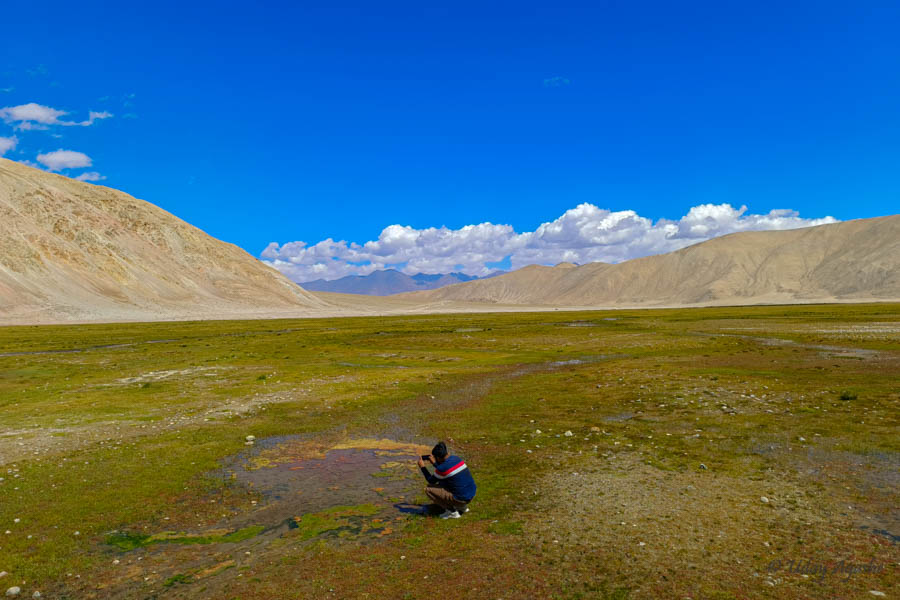
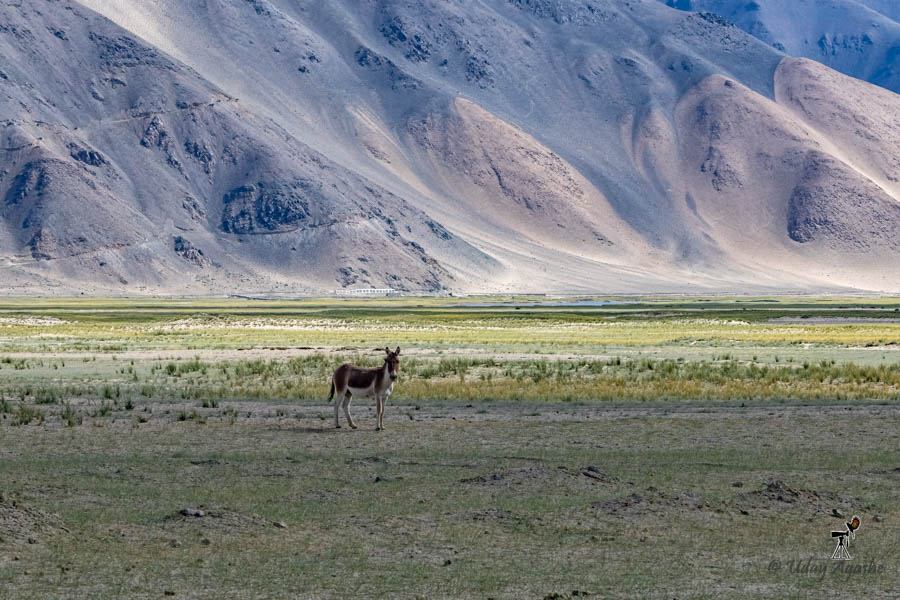

Here we got a little lucky break. From our moving vehicle, Onkar spotted some movement and he insisted on waiting to check it. On closer inspection, Abhay managed to locate the Tibetan Sandgrouse.
Soon we could see a group of at least 10 individuals there. We all slowly approached the flock and managed to get some nice photos (although the light was harsh).


As we were returning to our vehicle, I saw some movement on the road ahead, from the front glass. Quickly took a few record shots as our guide identified it as the Mountain Weasel (from the family of the Mongoose). It was a rare sighting, so once again everyone got down (except me that is, I was satisfied with whatever I could get through the glass) .
But the weasel was difficult to photograph. Despite our group members trying it corner it to within a small region. It probably slipped into a burrow. Finally, everyone had to return without any photos.
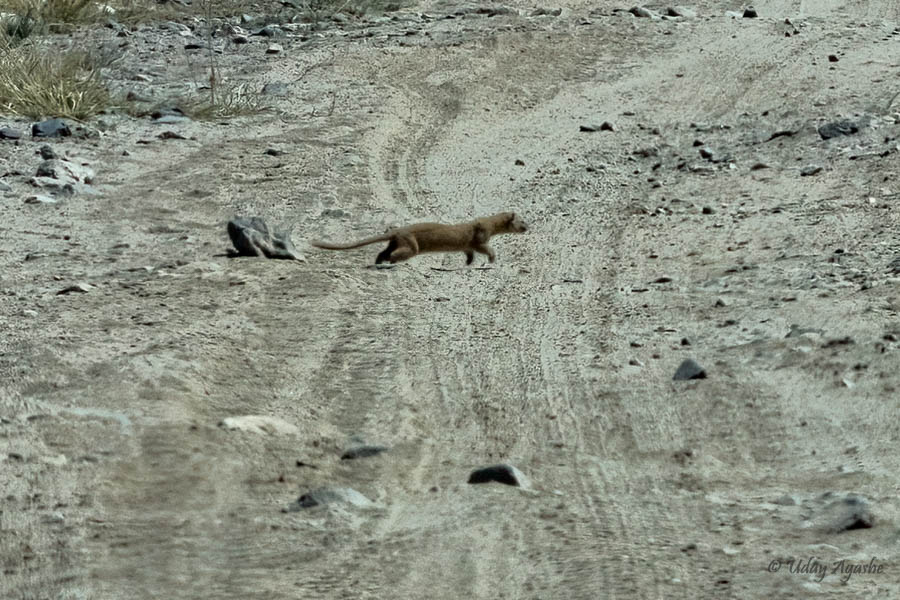
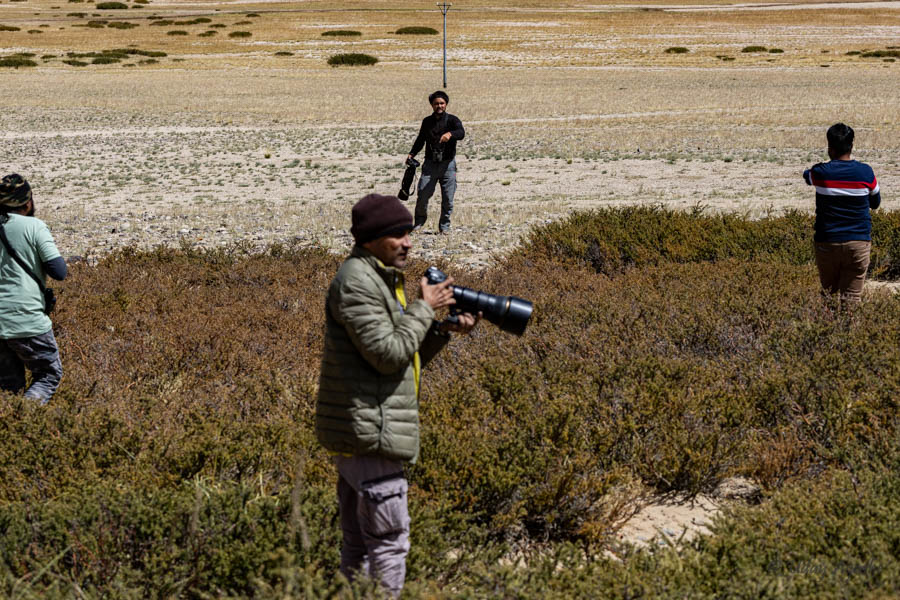
As we were moving ahead, we saw a vehicle with a few people standing outside. On reaching close, one of the ladies requested some water. On inquiry, she said that 2 of their tyres punctured and now they are waiting for some help (a similar vehicle, that can provide them with a spare tyre). That was a very bad situation to be in. This part is like a no man’s land. There is no settlement anywhere in the vicinity and at that altitude it is very difficult even to walk long distances.
Thankfully, their driver managed to repair both tyres and we saw them (safe) at the restaurant where we waited for lunch.
The region that we were crossing was close to the China border and we could also see some army camps close to the road. The area was completely barren, but luckily we found a small restaurant there. Once again, I was not able to have any food and survived on lemon juice instead.
All through the journey, we saw a lot of Kiangs, some wild horses, and Yaks.
By now everyone was tired (and the sun was shining too brightly) but even then our guides were alert and were constantly on watch. Their vigil helped us get two more lifers.
First was the twite. A small bird (Frankly, I had heard the name for the first time). Without wasting any time, we quickly took a few photos.
Then came the Mongolian finch, this one turned out to be a little tricky. We waited for it on the road but it was moving very quickly. 3-4 times it sat on a perch near us but it was there only for a second or so. In the end, we had to be satisfied with just getting a record shot.

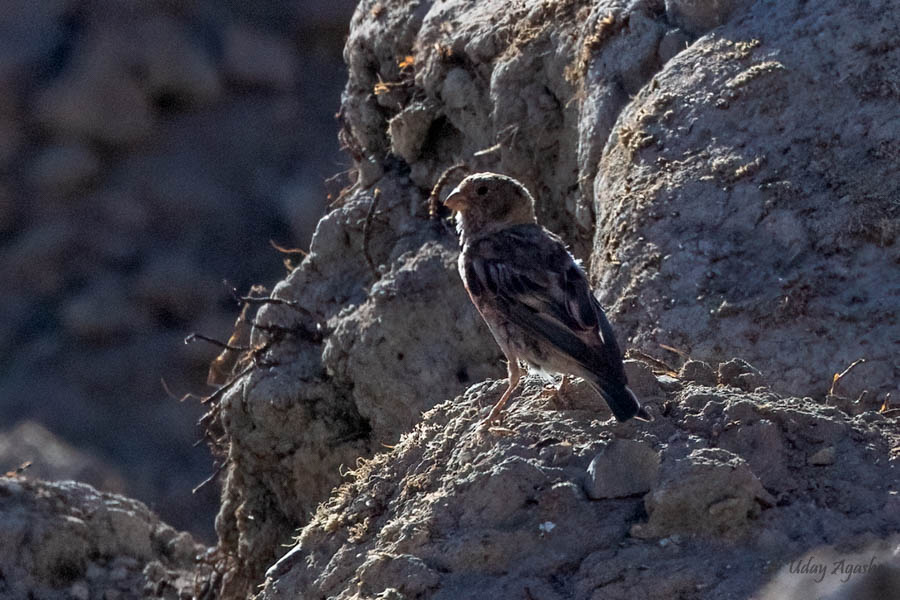
As we were nearing Hanle town, Abhay saw a huge raptor on an electrical transmission tower. By the time our driver got the message to stop, we had moved way ahead. So we slowly reversed some distance, here Abhay first checked the ID features and identified it to be the Upland Buzzard. Now we all got out of the vehicle and started approaching the bird slowly (there was no way our approach could be hidden from the bird but luckily it was not bothered). We walked further away from the bird to the desert side to get favorable light.
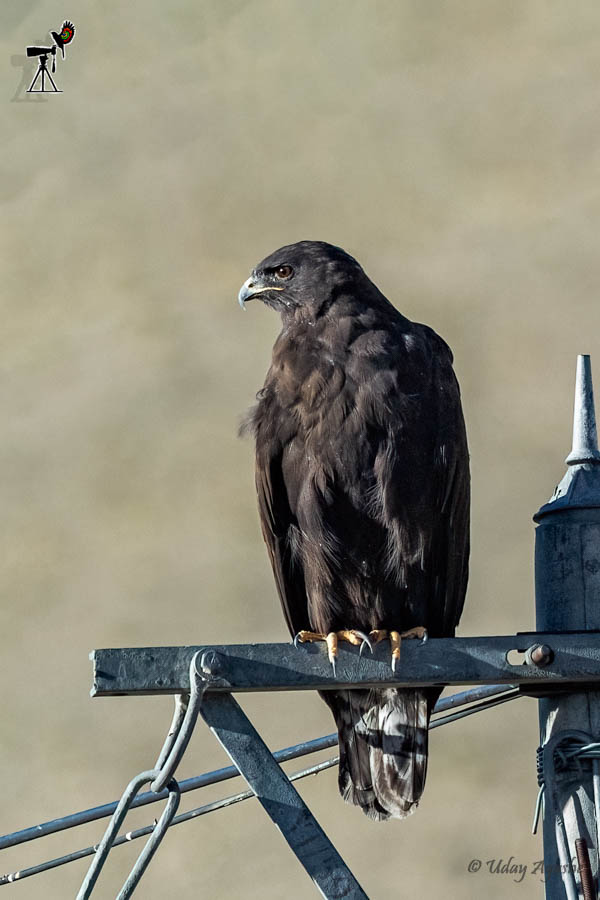
It was around 6 o’clock when we finally reached Hanle town (the place is also famous for the Indian Astronomical Observatory). But once again, before going to our Homestay, we went straight to the sanctuary side as our guide wanted to check for the Eurasian Eagle Owl.
The light was reducing fast but we managed to locate the Owl successfully. It was perched nicely on the rocks and looked alert (maybe it was time to get active for its day). Slowly we came out of our vehicle and took a few record shots. As the owl seemed undisturbed, people got the tripods and took small videos of its movements.
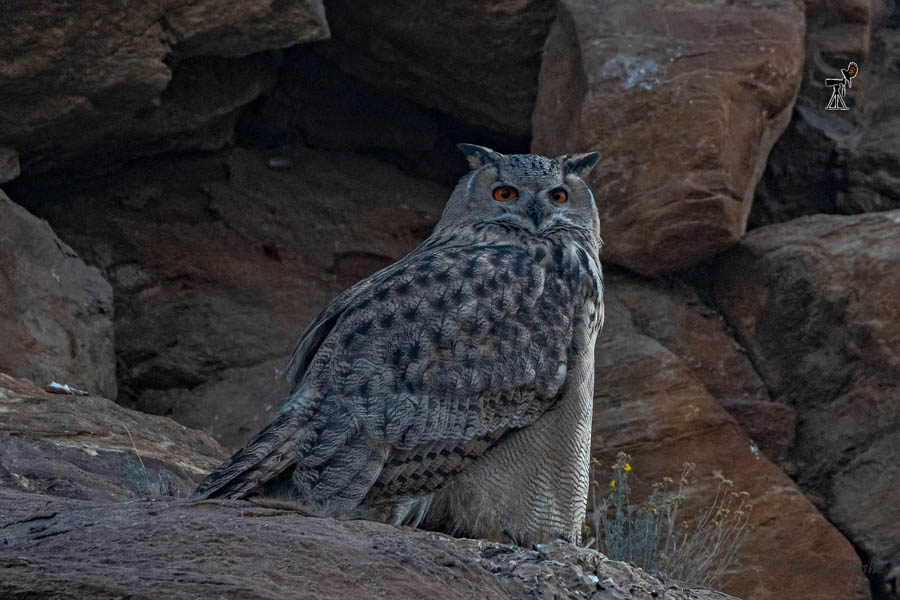
After that it was too dark to explore the region any further (for Pallas’ cat), so we checked into our homestay. We checked into the rooms and I just lay down on the bed for a few minutes.
Frankly, the overall health of all of us was not very good. Every one of us had some issue or the other (insomnia, general fatigue, headaches, loss of appetite, etc.). From altitude of Leh (11000 feet), we had come to first Merak and then now at Hanle (both about 14500 feet). The ascent was probably too steep for our bodies to handle hence those symptoms. I was probably more affected than others so we even thought of utilizing the Oxygen cylinder that we were carrying with us. But our guide warned us here, that the cylinders contain pure oxygen and it should be only used in emergency (extended use of direct oxygen is not good for lungs). Based on his instruction, I just used it for a minute.
At dinner, I was in a little better position as I could have some solid food after long. By then, Abhay took the call that instead of going to our next stop at Tso Kar (which was further 1000 feet high), we should return to Leh, and stay an extra day there. Everyone agreed to that and luckily our main organizer at Leh agreed with the change of plan (at some extra cost obviously).
At dinner, our guide got an Oxymeter and we generally checked the readings. My Oxygen concentration was showing 78 (in Mumbai, we panic if it goes below 95) but here in this thin atmosphere, above 60 is considered good. The heart rate for every one of us was 80+. It was obvious, that due to less oxygen, the heart was pressured to pump faster (plus because of the increased RBC count in blood, it becomes thicker).
Hanle is known for clear skies at night and people come here especially for astrophotography. Dnyaneshwar was very enthusiastic about it and so was Gurunath. They went out on the street and took some photos of the Milky Way galaxy.

As usual, we got to bed at around 9 pm and hoped to have a better sleep (I had taken a paracetamol tablet as well)
Day 5: Back to the comfort of Leh
As usual, I had a disturbed sleep, and at about 1 a.m. I was fully awake. And to my utter surprise, it was completely dark everywhere (in the room as well as outside the window). It was so dark that it was frightening (the low oxygen plays with our mind too). The feeling of suffocation was suddenly prominent. So far all these days, although we could not sleep, at least we could put on the lights, and that gives some comfort, but here I had no clue why no electricity. Later in the morning, we got to know that in this area, they have electricity only from 6 p.m. to 11 p.m. every day.
I could sense that even Gurunath was awake, we chatted for a few minutes in that dark but then decided to just lie down. Luckily I could get some sleep till the morning (possibly an hour or so). Finally, at 5 we decided to get up (we planned to start the day before 6 anyway). Dnyaneshwar was not feeling well (did not have good sleep), so he did not join the morning session.
In the morning session, we wanted to primarily cover the Black-necked Crane and the Pallas’ cat. Within the first 20 minutes, we sighted a pair of the Cranes. They were quite far from us but a lifer was ticked off anyway. Then came the prized catch of the trip. As we moved around the possible habitat for the cat, our guide suddenly looked excited. We stopped the vehicle and got out to check.
On the top of this small hillock, we finally managed to see the Pallas’ cat. It was overlooking the surroundings like a king looking over its territory. All cameras were now pointed in that direction. It was cold outside, so after a few photos (it was not changing its position, so there was no point in having clicks) I got into our vehicle. But within a minute I realized all my friends went into a clicking frenzy and their camera direction was different. As I got out, I could see the cat was coming down from its apex position and it was slowly walking towards the tar road a little ahead of us.
From time to time, it stopped, looked around, and again continued on its path. It crossed the road and went to the grassland on the other side. It was cautious all the while and was probably in a hunting mood. It remained in the grassland only for a few minutes and slowly walked back to its high position in the hills. Frankly, we could not have asked for a better sighting.
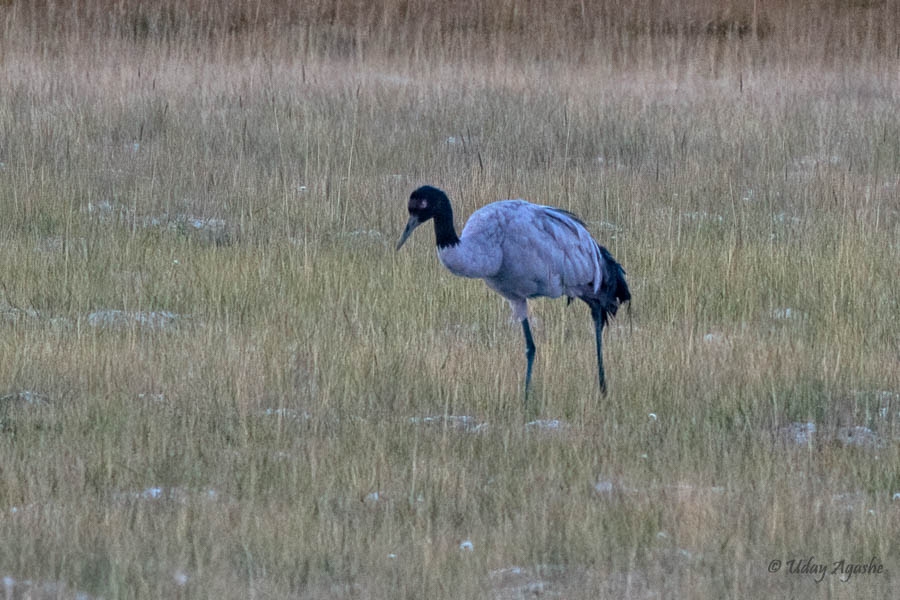

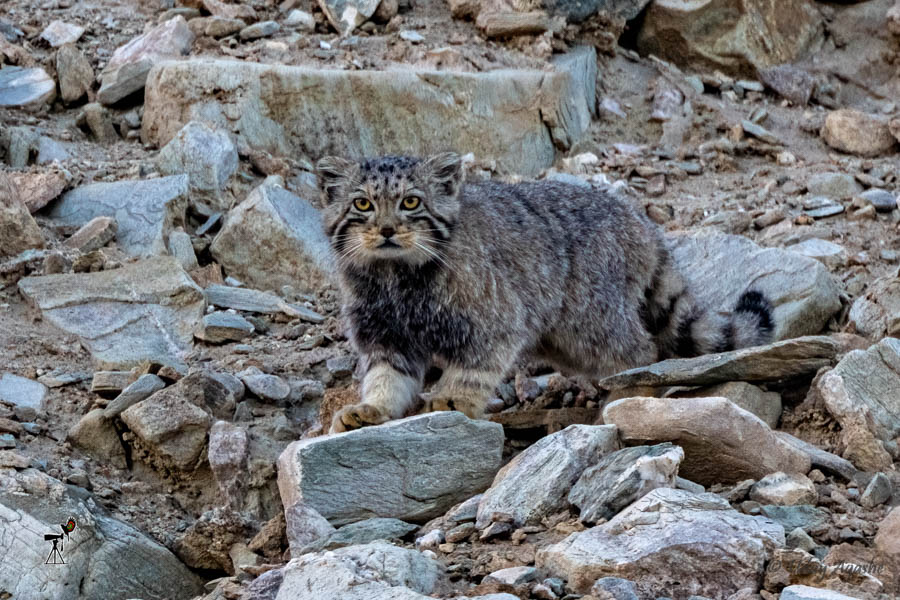
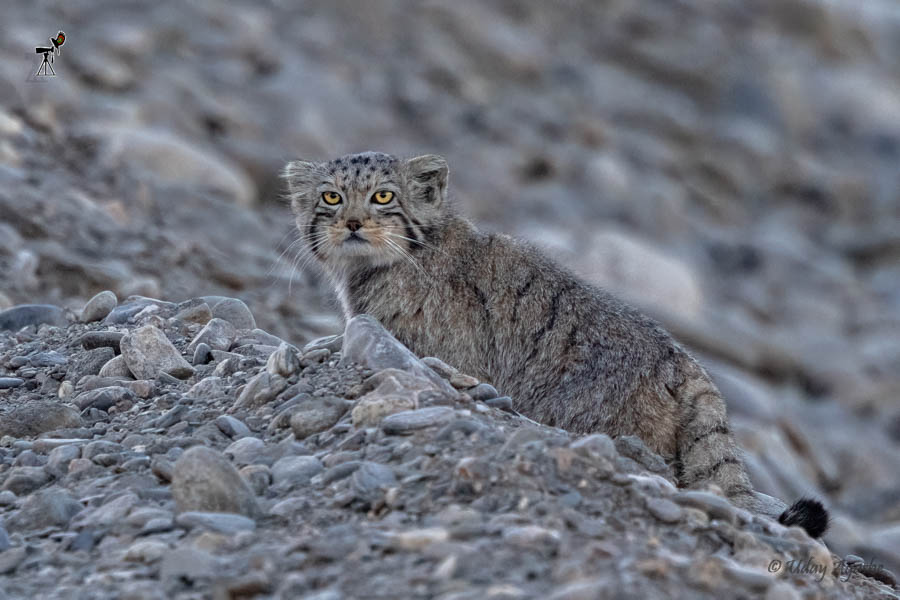
Once the main targets were done, we had a relaxed round of the region. During the morning hours, there was a lot of bird activity in the grassland region. There were many larks, sparrows, and even plovers. But the biggest number was probably of the Common Hoopoe. We could see the Black-necked Crane pairs on two occasions but both times they were far off. We also saw the Wolly Hare walloping in the grass.
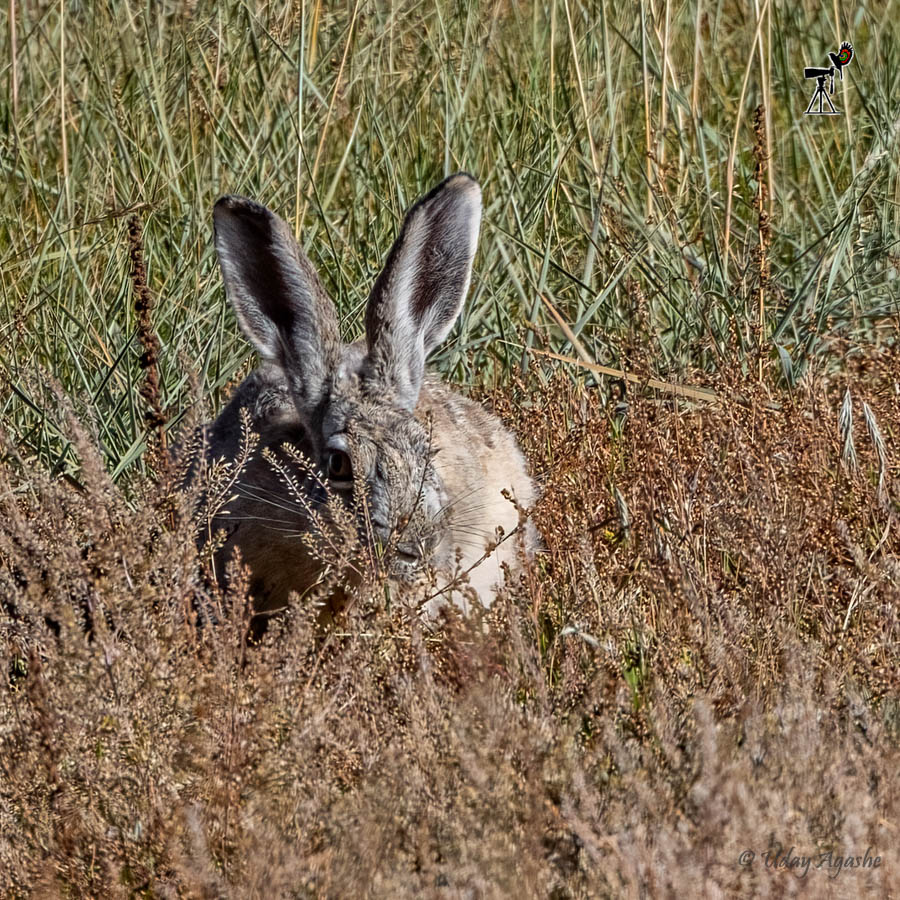
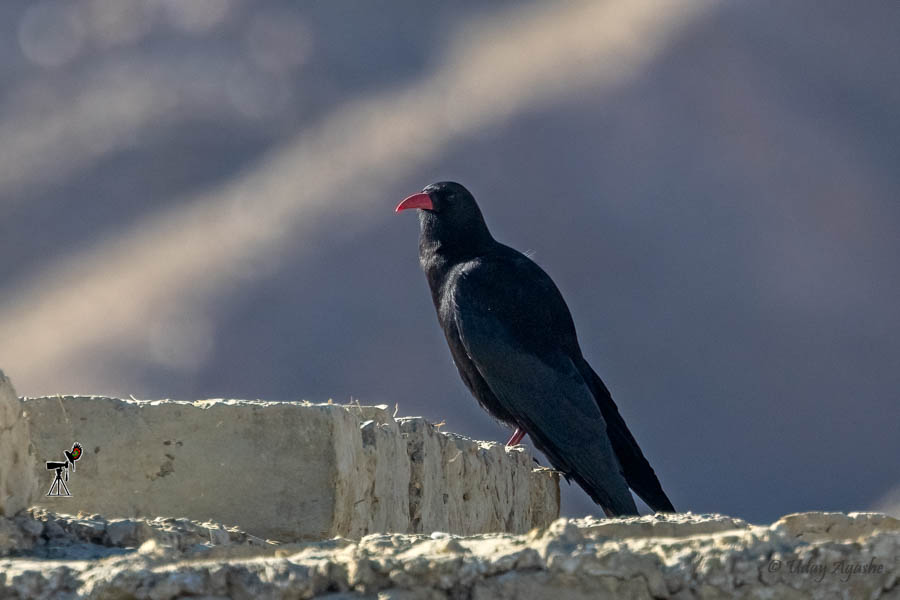
By 8, we were back to the homestay. Our bags were already packed, so we quickly had our breakfast and started our journey back to Leh. The distance was about 250 km and we expected to reach there by late afternoon.
As we were constantly on the lookout for birds around, we stopped from time to time whenever a good photo opportunity came our way. Our first stop was for Upland Buzzard which was perched on the ground. As it was far, we tried to take our vehicle a little closer and from there tried to walk but unfortunately, the bird flew away.
Then we got an opportunity to click the Golden Eagle close to the ground. Even this was far off and although it flew some distance allowing some flight shots, it was way too far.
Then came an excellent opportunity of photographing the Black-necked Cranes. So far we had seen them from far but here there was a possibility of approaching them for a close shot. It was a lot of distance to cover, so I decided to stay back but others started the approach hidden behind some bushes. Most probably the Crane pair had a nest somewhere close by, and because of this, they did not fly away easily. This allowed some excellent shots (in hindsight, I should also have walked that distance).
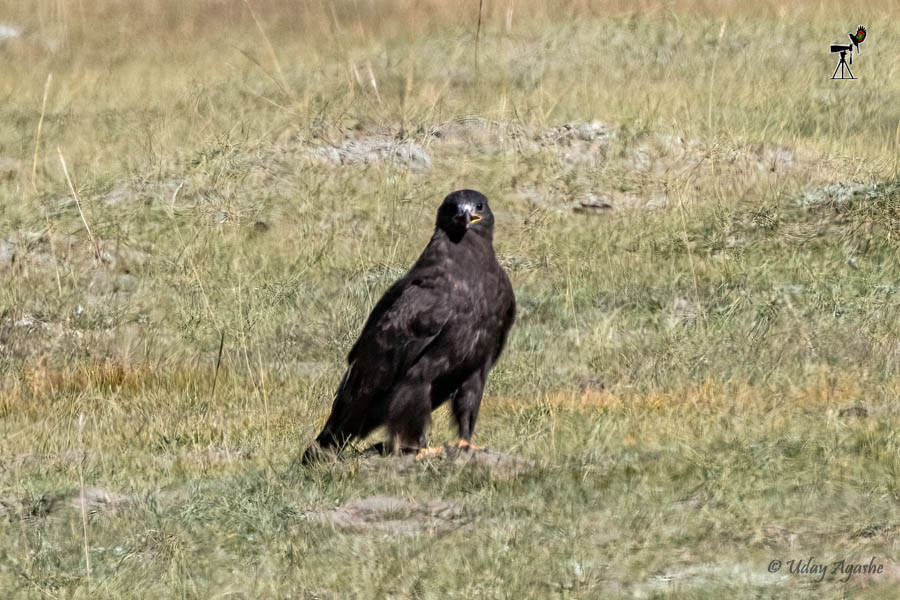

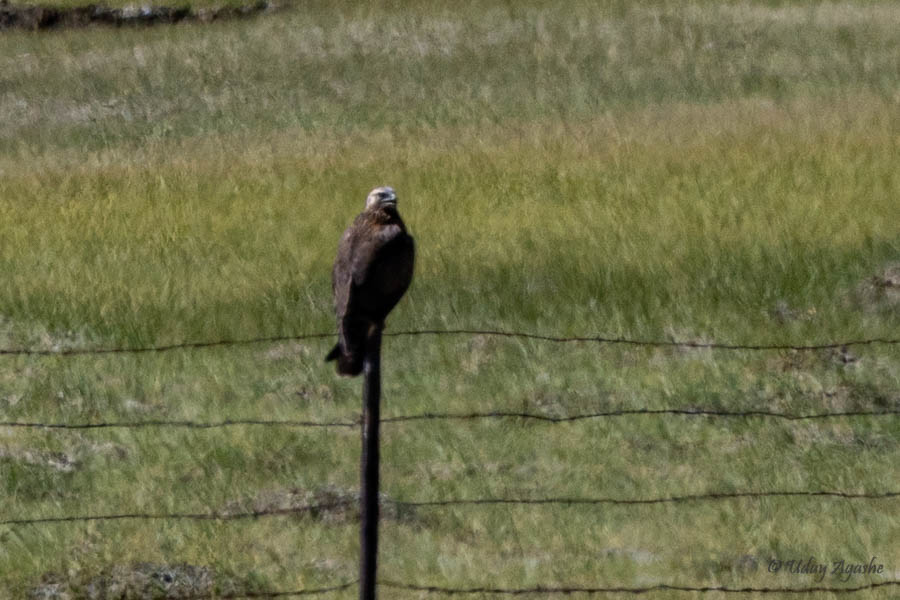
On the way we came across a small town where we could see a few restaurants, so today we had some choice instead of taking whatever is available. By now, my appetite had also improved and I was able to have a nice big Aloo Paratha.
After lunch, we were on a stretch of road where we were moving parallel to a river and there we saw a few waders (gulls mostly). On one of the transmission wires, we even saw a Common Cuckoo.
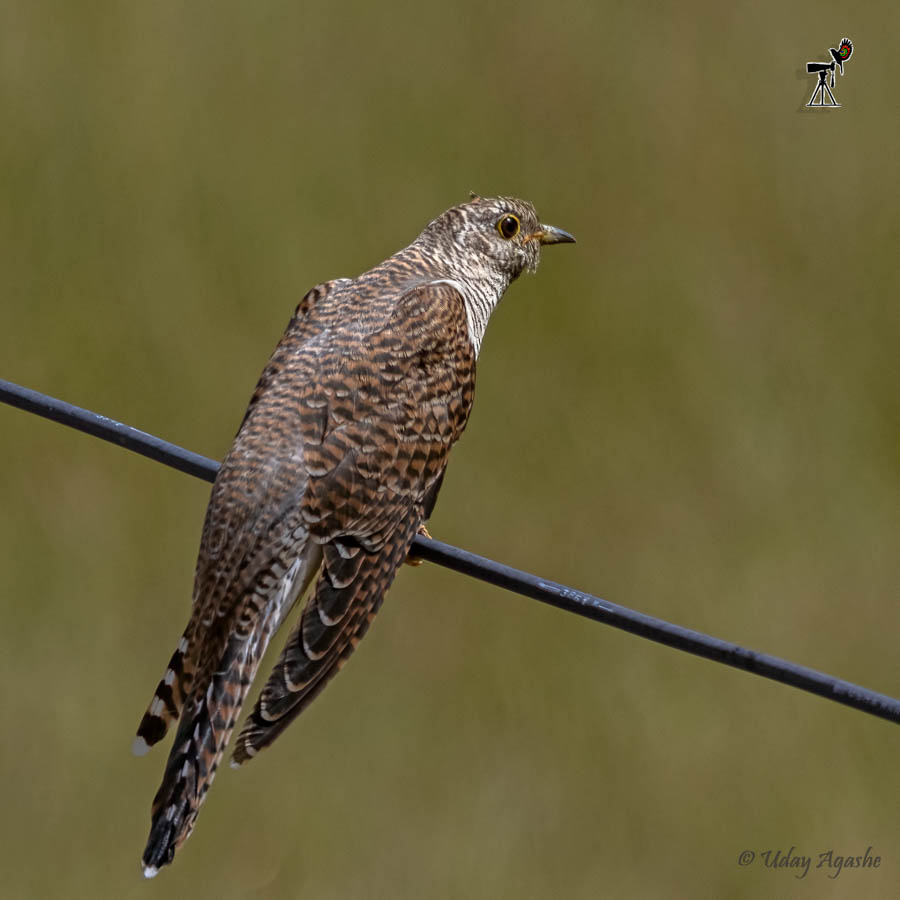
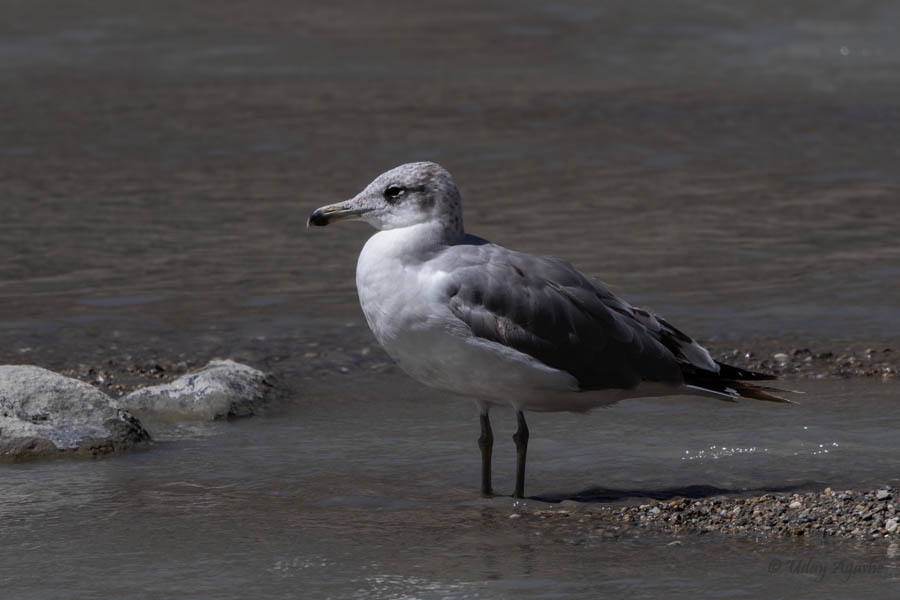
Across Ladakh, wherever you travel, the landscapes are just amazing and today’s stretch was no exception.

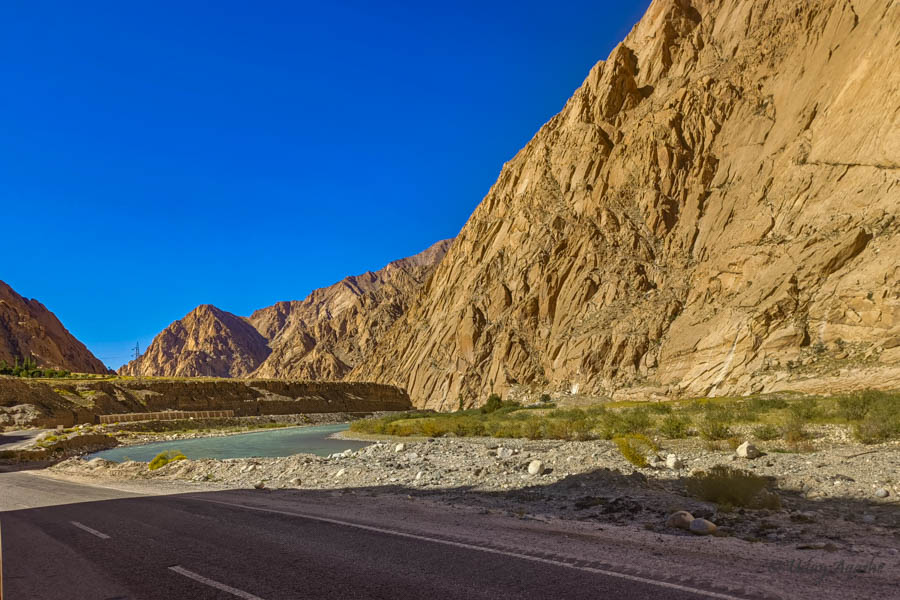
Close to the Choglamsar (our homestay location in Leh), there is this Thiksey Monastery and it was on our way, so we decided to take a small detour and spend some time there. But we avoided taking the steps (too many considering the altitude) and instead took a few photos from the ground itself.
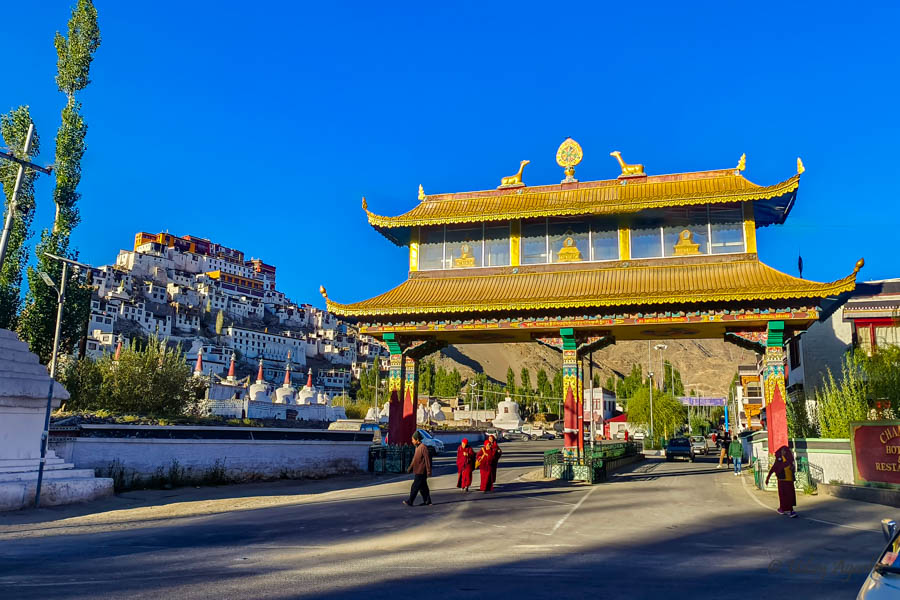
By 6 p.m., we were back in our Homestay and it felt like coming home. Here we were a little relaxed and suddenly most of the health issues looked trivial. We had a quick tea and unpacked our bags (as for the next 3 nights we were going to stay here).
Day 6: Leasure time in Leh
Today we had only planned for a half-day outing and we planned to go to a hilly area close to Leh town. The main targets today were Chukar Partridge (we missed its photos) and Fire-fronted Serin.
Since this was a short distance travel, we took 2 small cars. One was driven by our homestay owner PT and the other by Dnyaneshwar.
Today for a change, all of us were able to sleep a little better. So everyone was refreshed in the morning. We had a cup of tea with biscuits and started at 6:30.
By 7, we were on a small hill and soon our guide saw target #2 (Serin). These are small birds and we found it a little difficult to see them. As we got down, we got a better view and clicked a few photos, but that reddish (fire) front was not clearly seen. So we continued to follow their movements while the birds were busy foraging in the undergrowth. As we were watching this movement, our guide sighted something on an electrical tower. It appeared to be a common kestrel and as we concentrated on the tower, we counted a total of 7 kestrels on that one tower alone.
In the bushes, we also saw a few other birds. Most common were the Mountain Chiffchaffs. Soon we identified another short-tailed bird to be the Winter Wren. A small bird that generally remains inside the leaf cover but here we found it to be bold. We could get some nice clear photos.
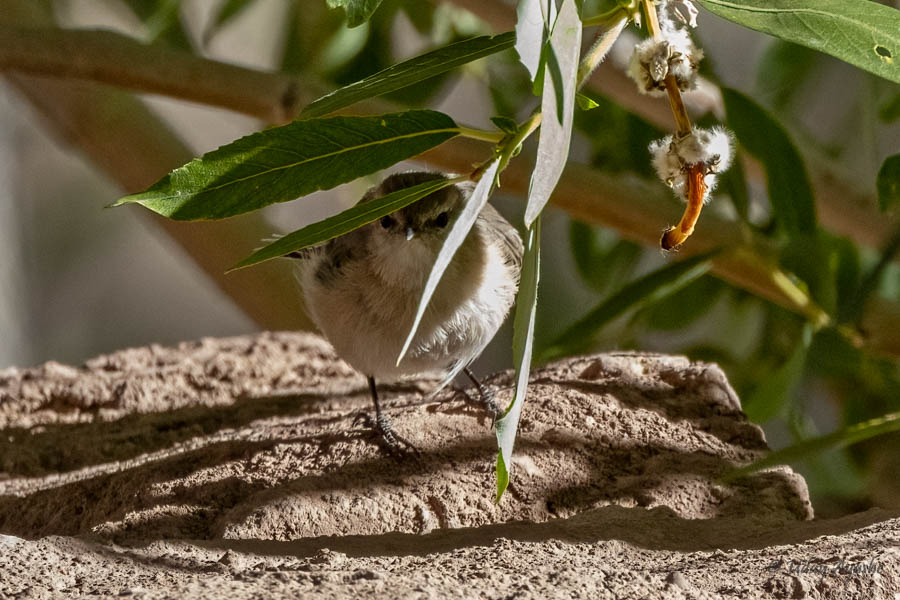
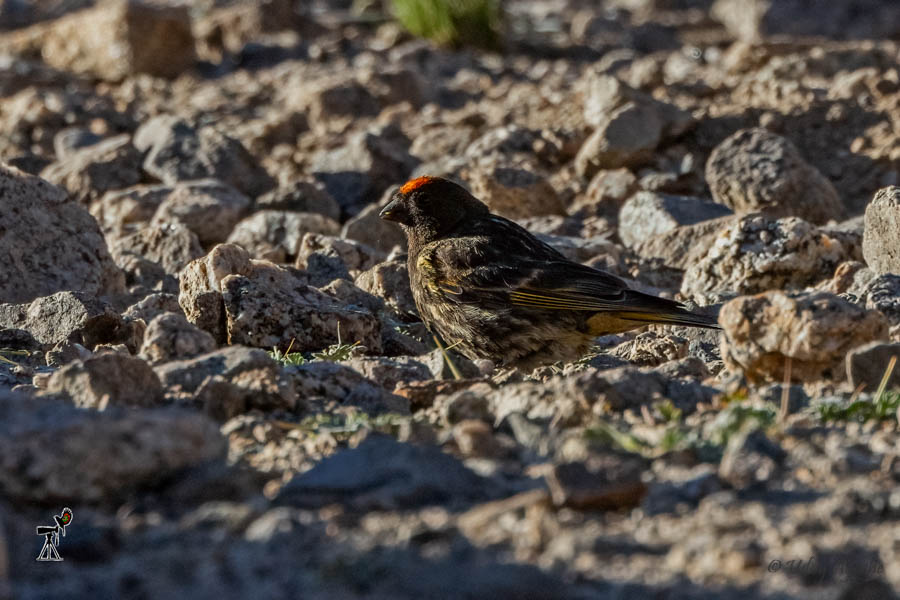
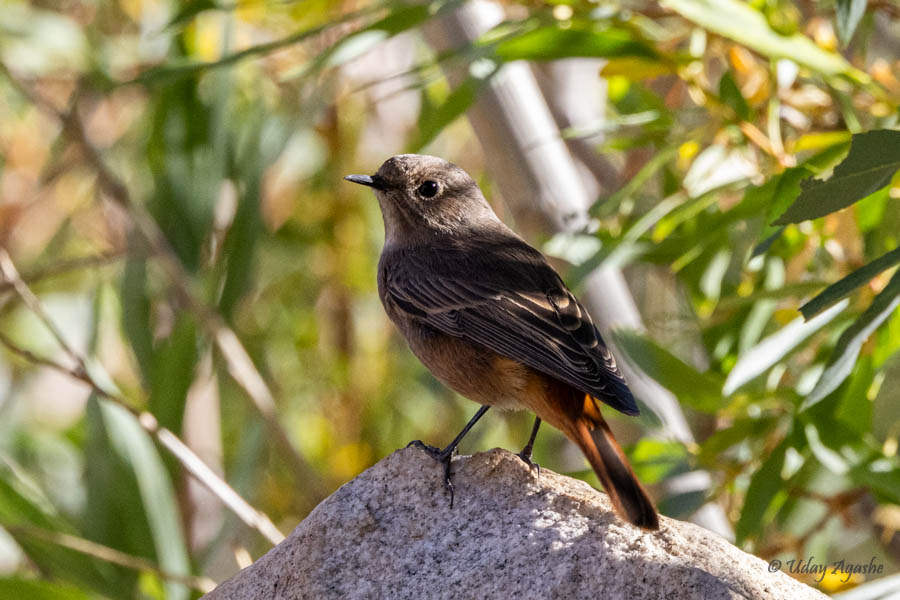

There were a few other common birds around but no sign of the Chukar Partridges. Our host searched a lot but they were nowhere to be seen that morning (although he was very confident of finding them there).
Finally, at 8 we decided to return, even light was getting harsh and the possibility of finding the partridges in the open was reduced. On the way back, we saw the beautiful Shanti Stupa, a white building with the backdrop of icy mountains.
Here we saw a dirt bike track and as were passing it, our host saw one raptor circling above. The track was unoccupied and luckily the gate was open, so we just put the car through it. That turned out to be a good decision as soon we saw the Golden Eagle in flight. By 9:30 we were back to have our breakfast.
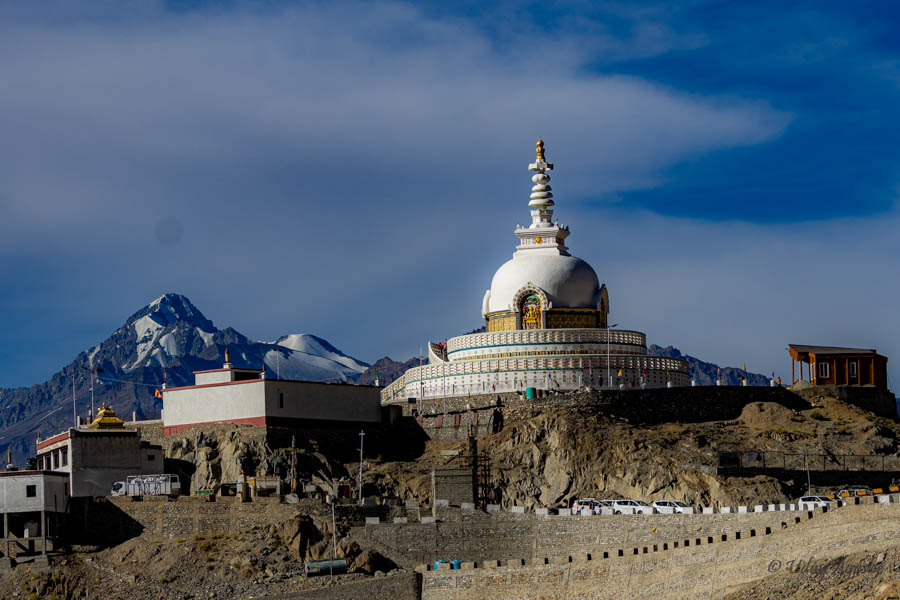

Today we had not planned for any other birding so we decided to go to the Magnetic Hill. This was about 20 km from our place and the story about this hill is because of its magnetic energy, the vehicles move up the slope automatically (obviously there is no truth in it, it's just some illusion and more hype created for tourists). We planned to return for lunch.
As we moved past the Leh airport, we could see some lovely vistas of the valley. Twice we just parked our vehicle on the side of the road (it was the Srinagar-Leh Highway)and did some landscape photography. I did it with my mobile camera.
We did not find anything interesting at the Magnetic Hill point but about a kilometer ahead we saw a confluence of Indus and Zanskar rivers. The water coming from Zanskar was muddy and the one from Indus looked clear blue. We spent some time looking over the valley and while returning decided to check the Leh market on the way. Here we also saw a Maharashtrian Restaurant. We could have had our meal here but our lunch was ready at the Homestay.
After lunch, we relaxed for a bit and the plan was to visit the Leh market for some shopping in the evening. But I decided to skip the shopping part and continue to take a rest instead.
Once again, at night we managed to have some decent sleep. Even the appetite was back to normal.
Day 7: Trip to Warila Pass
Today we planned to visit the Wari La Pass for the two Snowcocks and the Chukar Partridge (as we kept missing it everywhere).
In general, from Leh side to Nubra Valley, there are two possible paths. One is through the famous Khardungla Pass and the other is via Wari La Pass. Both have similar habitats & altitudes from a birding point of view but due to good road conditions, the Khardungla Pass is often preferred by all travelers. The road to Wari La is poor (to the extent that the travel guys charge a little more if someone insists on taking that road).
And precisely for that reason, we decided to take the Warila route. Fewer vehicles mean less disturbance for the wildlife. So naturally, the chances of finding the birds are higher.
The expected travel time was about 2 hours and we wanted to reach the place before daybreak (a good time to see the snowcocks while they are busy foraging). Once again, we started at 4:30 with a packed breakfast (the cook made the parathas ready by waking up at 2:30 for us).
This time I was better prepared for the cold (Wari La is at 17400 feet, similar to what we experienced earlier at Changla Pass). The journey to the ghat section was peaceful. The ghat sections here do have the zig-zag turns but the distance between each turn is more than what we typically see, so I had less of an issue here (of motion sickness).
As we gained altitude, the valley below looked beautiful. The morning Sun had just started brightening the mountain tops while the valley below was still in the shade.

This was now a perfect habitat for the snowcocks so all of us started closely observing the surroundings for any activity. The snowcocks are not small birds but they camouflage so well in the surroundings that unless they make some movement, it is almost impossible to see them. At one point our guide saw some movement and he stopped our vehicles immediately. Today we were again traveling in 2 small cars and since this road had literally no traffic, there was no issue in stopping anywhere. During that entire journey (till we were back), we hardly saw a handful of vehicles.
As our guides started scanning the area with binoculars, the Himalayan Snowcocks were seen. In that cold, it was a little difficult to operate the camera with hand gloves. So I got rid of that quickly and took a few photos. Soon we realized it was a small flock, there were more than 6 in one place. Not only that, we could now locate two separate flocks. The distance was far and the light was still low, but we managed to get some decent photos finally. We continued to click pictures till both the flocks flew past us into the valley below.

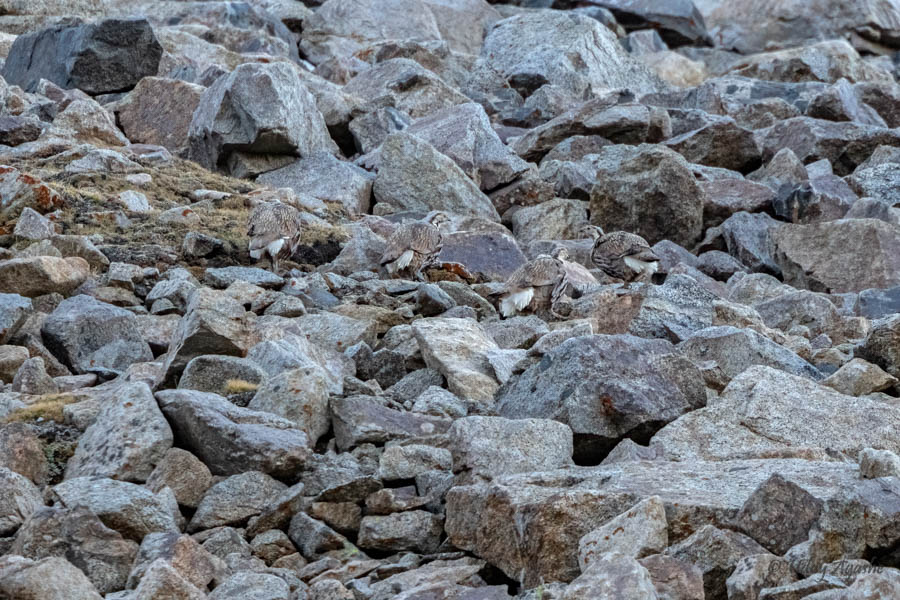
Himalayan Snowcocks were done but we had seen them in Changla as well (this time we got better photos). The Tibetan Snowcocks were still not seen. These are slightly smaller than the Himalayan cousins but are seen in similar habitats (at a little higher altitude). By now, we had reached the top of the mountains and this was the only place where we could see them. We all desperately started scanning the habitat, we even did some up-down travel (in the car obviously) to check every stone thoroughly.
After a struggle of 30-40 minutes, we finally managed to see the Tibetan Snowcocks. And they were at a much closer distance than the Himalayan Snowcocks. The only problem was separating them from the background in that light.
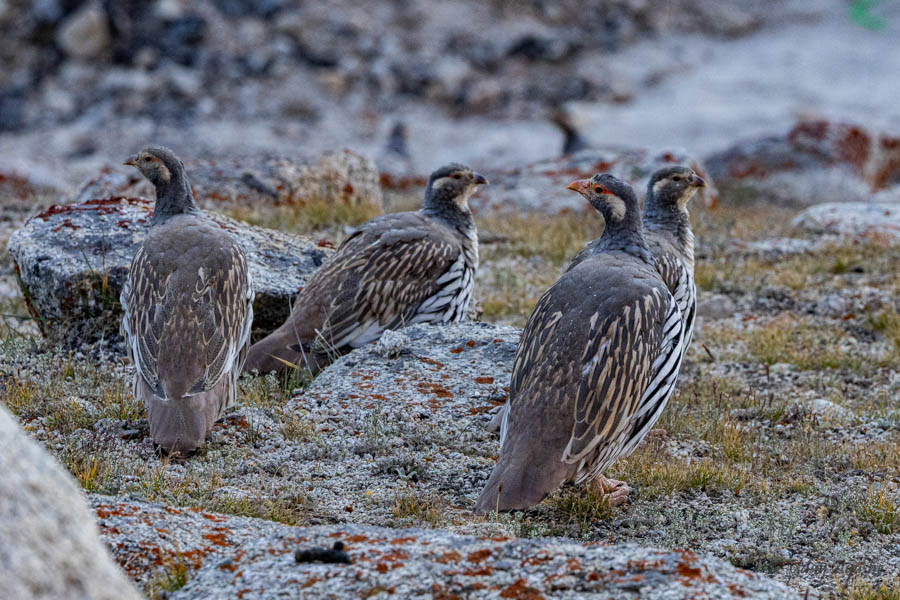
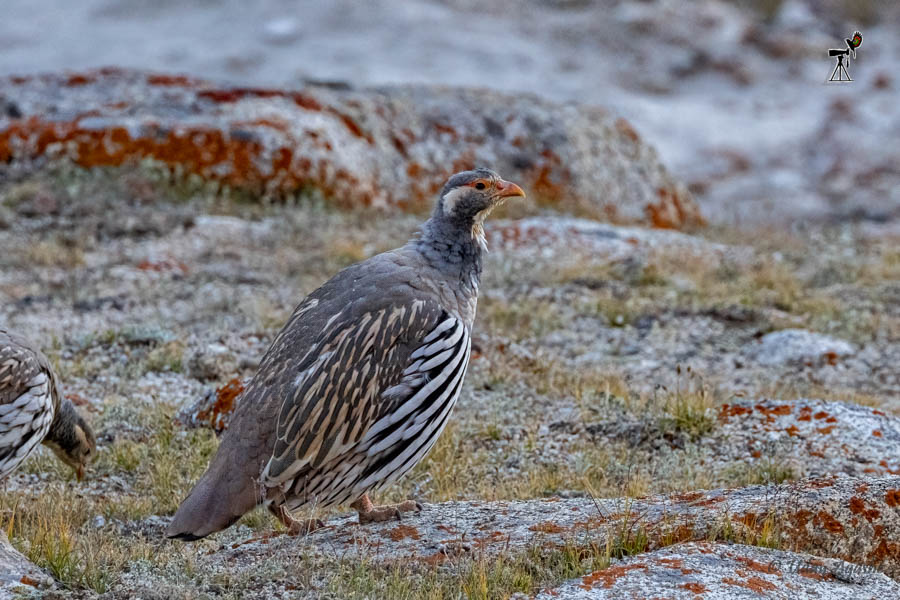
By 7:15, both the snowcocks were done (and Chukar Partridges were missing even today), but there was another target species for this region, the White-browed Tit-warbler. For its right habitat, we had to go to the other side of the Wari La pass. As we were moving down, we could see a lot of road construction work underway (no work was being done at that hour but we could sense trouble while returning).
On one of the turns, our guide shouted excitedly. We looked in that direction but did not see anything. He asked us to get out of the vehicle quickly and pointed in the direction of the Himalayan Red Fox. By the time we saw it, it was running away from us. Luckily, it took a moment’s rest and looked directly at us allowing a few photos.

After that, we went straight for the habitat of the Warbler. This area was full of some shrubs (about 4-5 feet in height) and the foliage was dense. We could hear a few birds and seeing them and capturing them on camera was going to be difficult.
Soon Abhay spotted the colorful male. He was constantly on the move and very rarely perched in one place for more than a second. This game went on for almost an hour. In the end, we had to be satisfied with whatever we could capture. There were at least 4 individuals in that region but very rarely in the open. We could also see a few Choughs flying above but none were yellow-billed (our lifers).

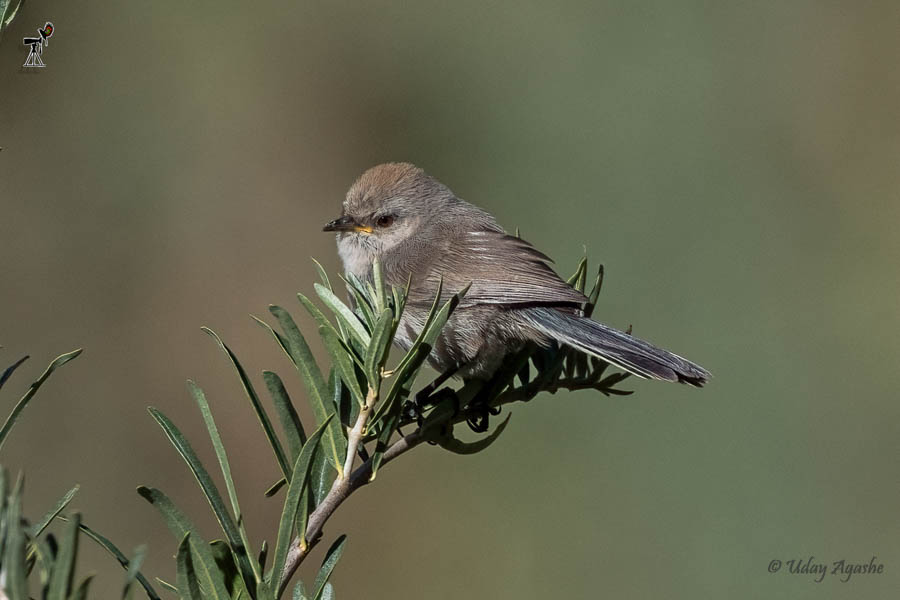
With that, we decided to have our breakfast. It was a good place with some grass and some shade. After the target species and the surprise sighting of the fox, we enjoyed the Dahi-paratha breakfast. To top it, we had got a thermos of hot tea as well.
After breakfast, we decided to start the return journey. By 10 a.m., the Sun was out and shining brightly, so we had no hopes of seeing the Chukar Partridge now. On the way back, we had 4 forced stops because of the road construction work. At every place, we had to wait at least 15 minutes before the workers allowed passage of our cars.
As we were descending towards Leh, our guide was looking out minutely. He had still not lost hope (of sighting the Partridges) and his strong determination finally yielded fruits. He saw a group of about 20 Chukar partridges (families with many young birds). He signaled us to get down slowly. In the end, we managed to get a few record shots.
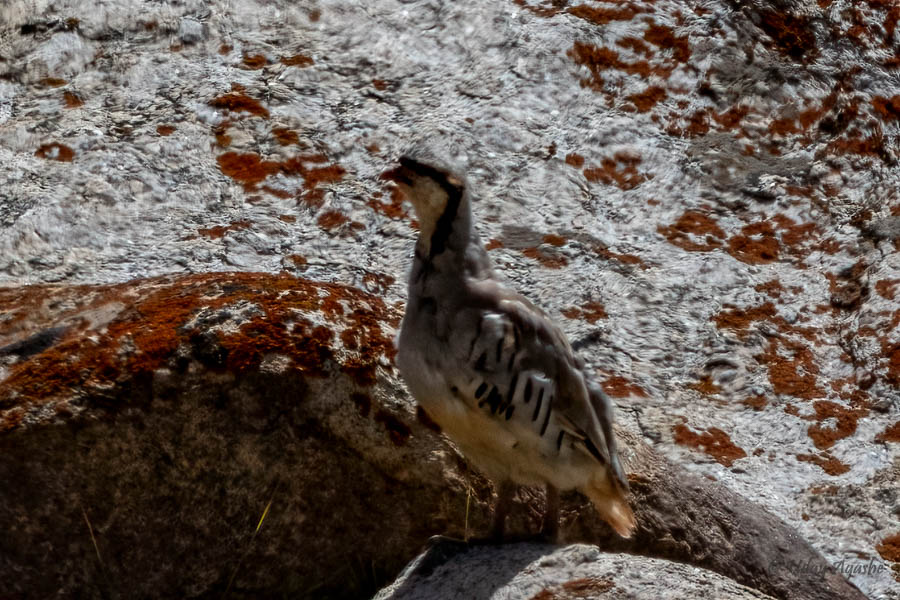
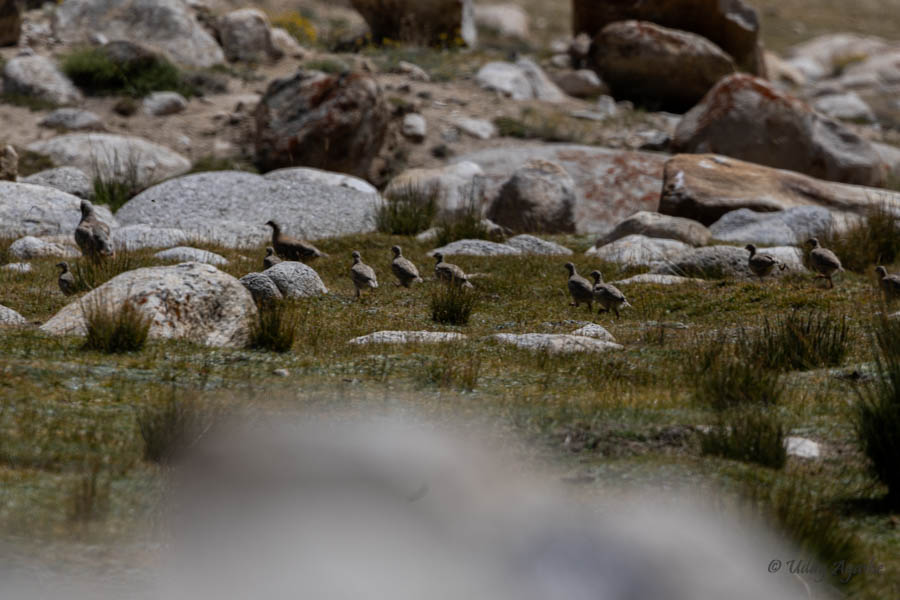
From there, we still had to travel for a couple of hours and that drive turned out to be very tiring. The light was so bright that despite having my sunglasses on, I started having severe headaches by the time we reached our homestay.
We reached for a late lunch (2:30) and after lunch, everyone was so tired that there was no possibility of any evening birding session. It was the last day of our trip as tomorrow we were flying back, so we just had a relaxed evening.
Overall, we were a happy lot despite the Mountain sickness issues. I got to see 30 new bird species here and that took my India life count to 867.
Day 8: Return to Oxygen
We got up at 6, had a leisurely breakfast, and left for the airport by 8 as planned. This time we had a direct flight to Mumbai. At the airport, we had a group photo with our Homestay owner, guide, and cook.
On reaching home I immediately checked the Oxygen levels and it was showing 98. Upto 11 am, when we left Leh it must be about 80, and by 3 pm it was back to normal.
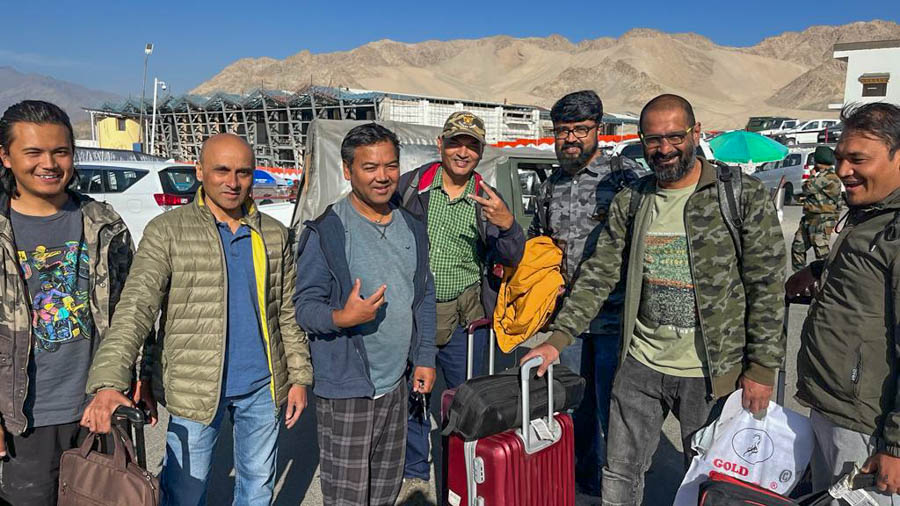
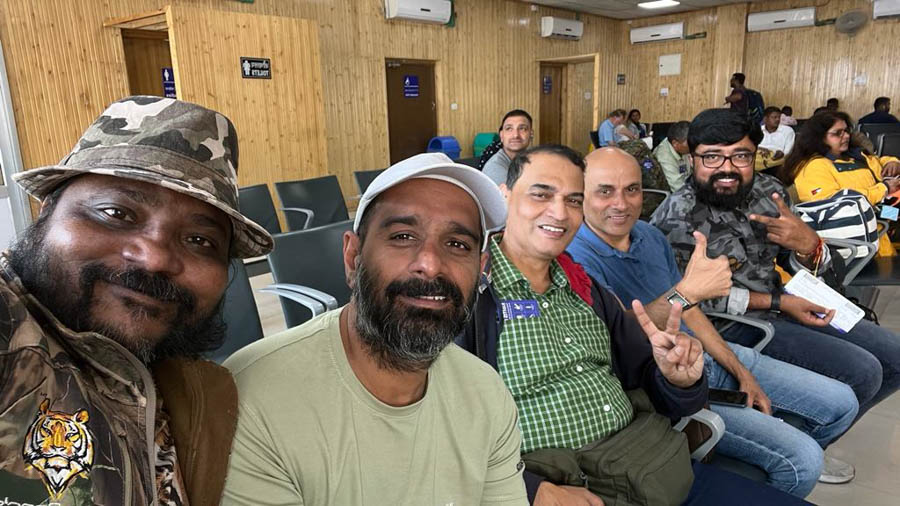
Please note: For the blog, I have used some photos taken by my fellow trip-mates.